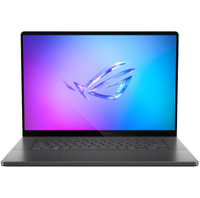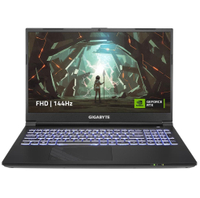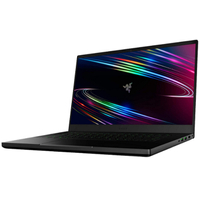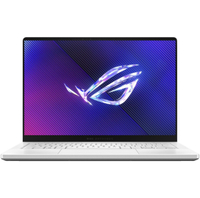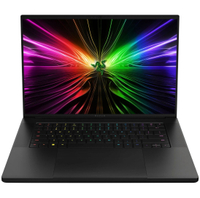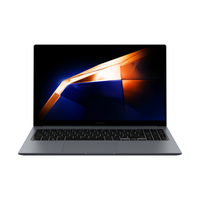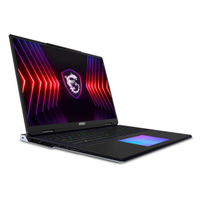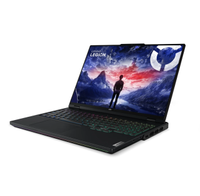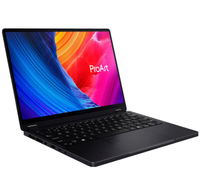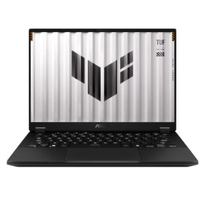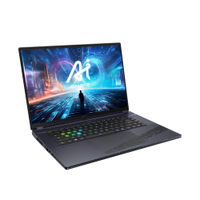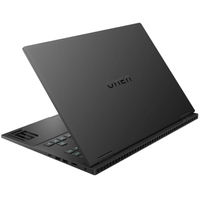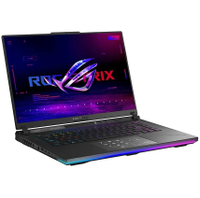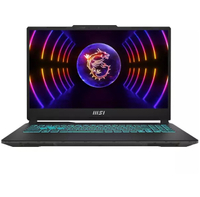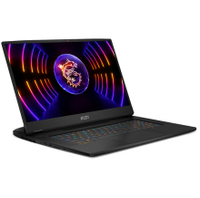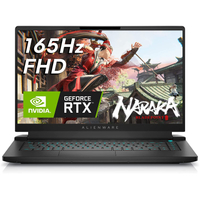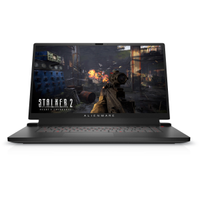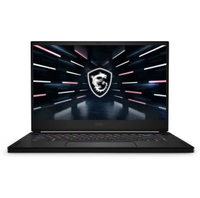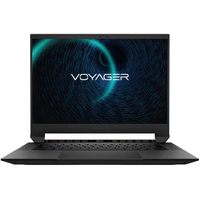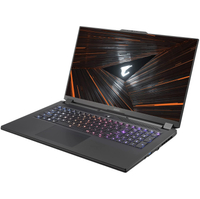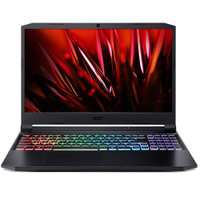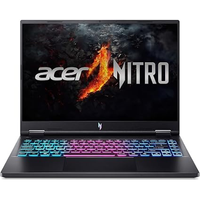The best gaming laptops in Australia for 2025
Don't compromise on power or portability with the best gaming laptops.
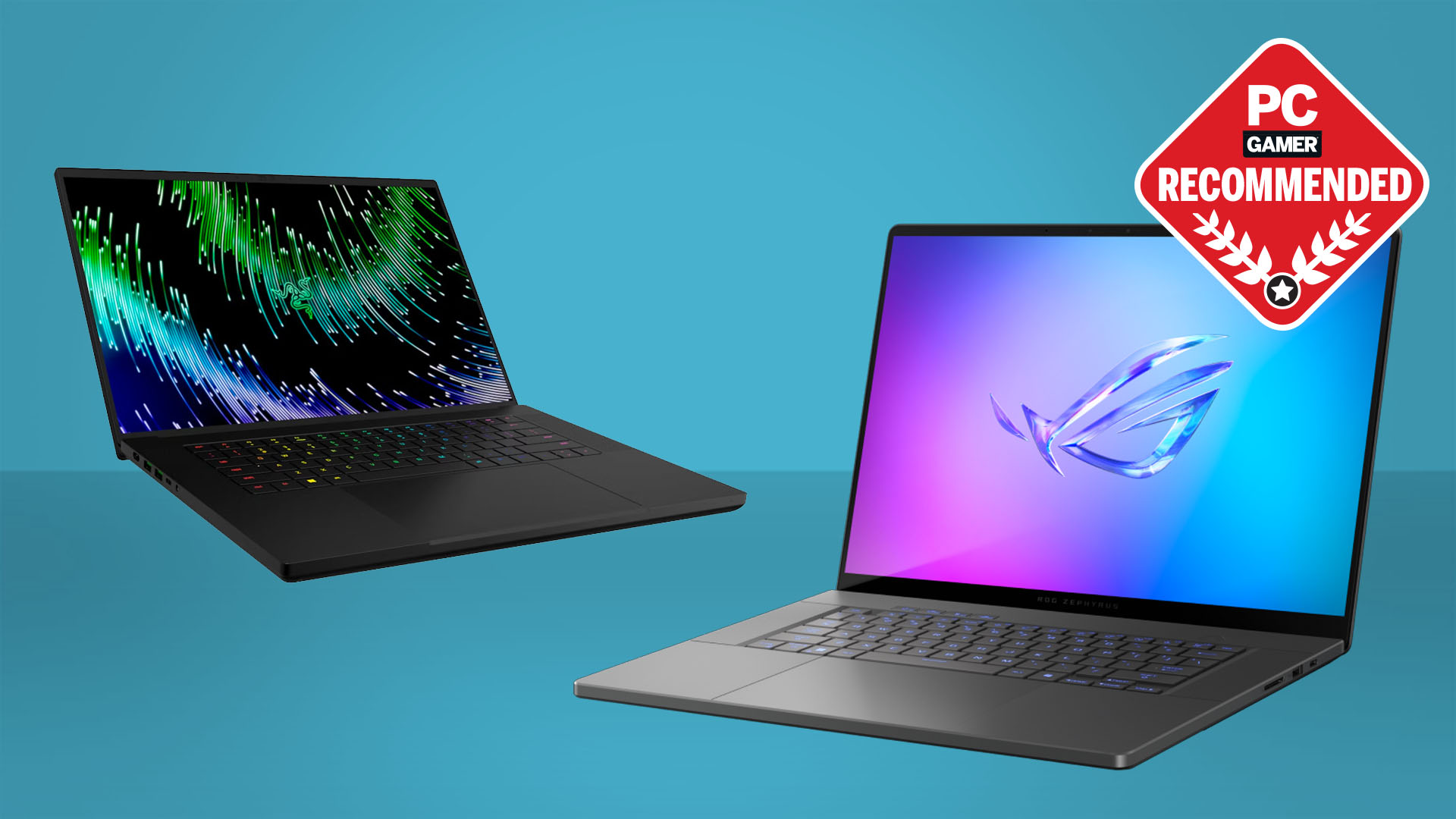
We've been testing the best gaming laptops, digging deep into the latest flavors of AMD processor and Nvidia graphics silicon, and we know which notebooks sing and which are just tone-deaf. We're not just talking about sleek, expensive new machines, either, as we've picked a range of gaming laptops at different price points to highlight which give you the best bang for your buck and which are just outright awesome.
The RTX 40-series generation of mobile GPUs is well established, although it's worth noting that the RTX 50-series mobile GPUs are on their way. Still, we're not expecting them to be significantly faster than what's already available, so there's no real reason to put off buying an RTX 40-series lappy, especially if you can find it at an attractive price. The Asus ROG Zephyrus G16 is the best gaming laptop because it gives you the perfect balance between portability, performance, and battery life. You can run it with a powerful iGPU, or with an RTX 4070 that matches its sleek chassis, or you can go Intel with an RTX 4080 alongside it and make some of the fastest RTX 4090 gaming laptops look like overkill. If you want to know what GPU you should be picking for your next machine, we've got a guide to the best graphics card for laptops right here.
If you can't face spending the big bucks to bag a fine mobile machine, our pick for the best budget gaming laptop is the Gigabyte G6X. You may need to add in some extra RAM to make it really fly, but that's easy enough and cheap enough to do.

Dave has had his head in PCs and gaming laptops for a couple of decades now, and knows what makes them tick, and what makes the best gaming laptop for every budget. Whether it's about looking for the highest performance, the best value, best screen, or just the best build quality, Dave has spent time prodding and tweaking pretty much all the laptops on this list.
The quick list
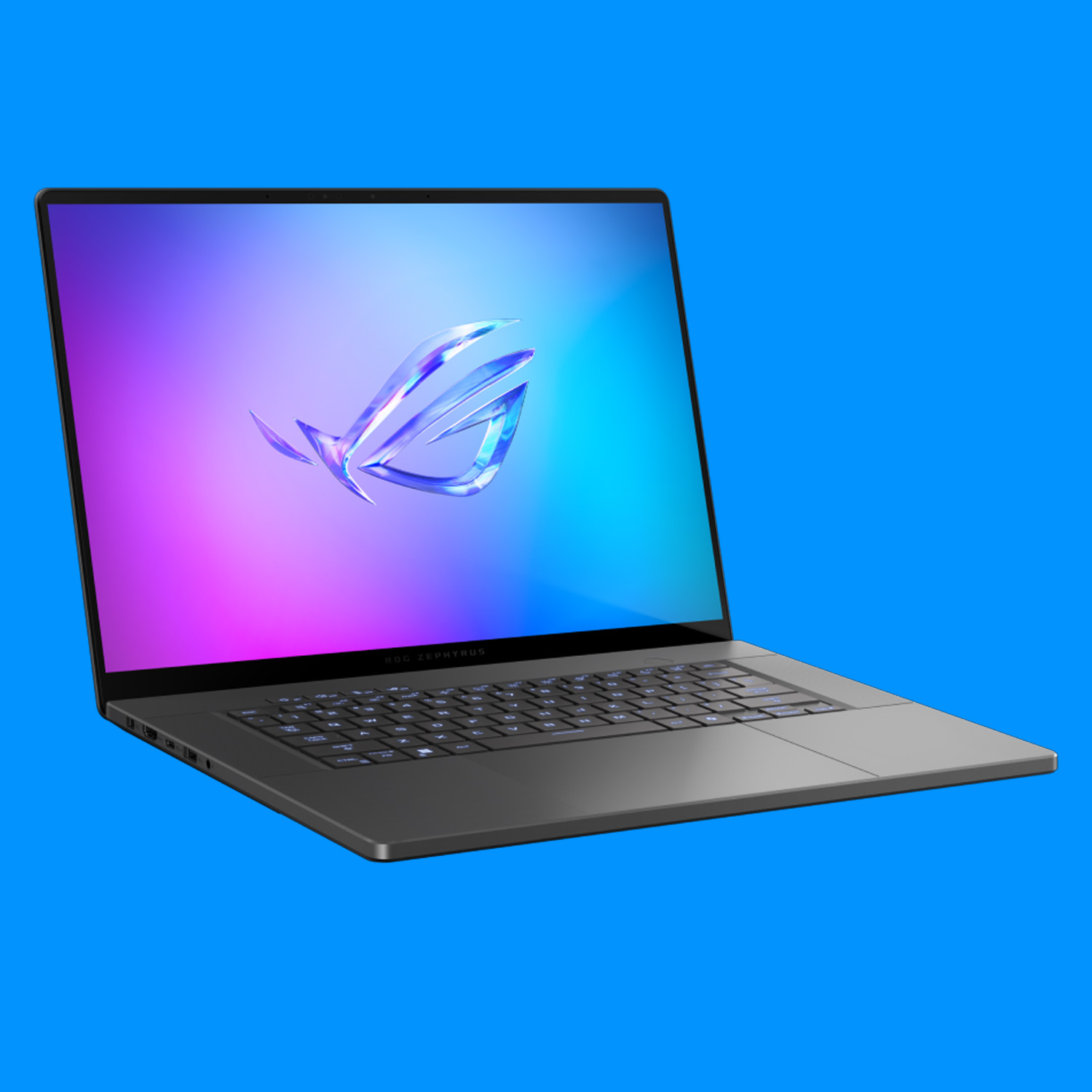
The best overall
The Zephyrus G16, with its beautifully slim chassis and gorgeous OLED display, has been improved no end with the latest Strix Point AMD processors. But, so long as you avoid the unbalanced RTX 4090 version, the Intel G16s are still great, too.
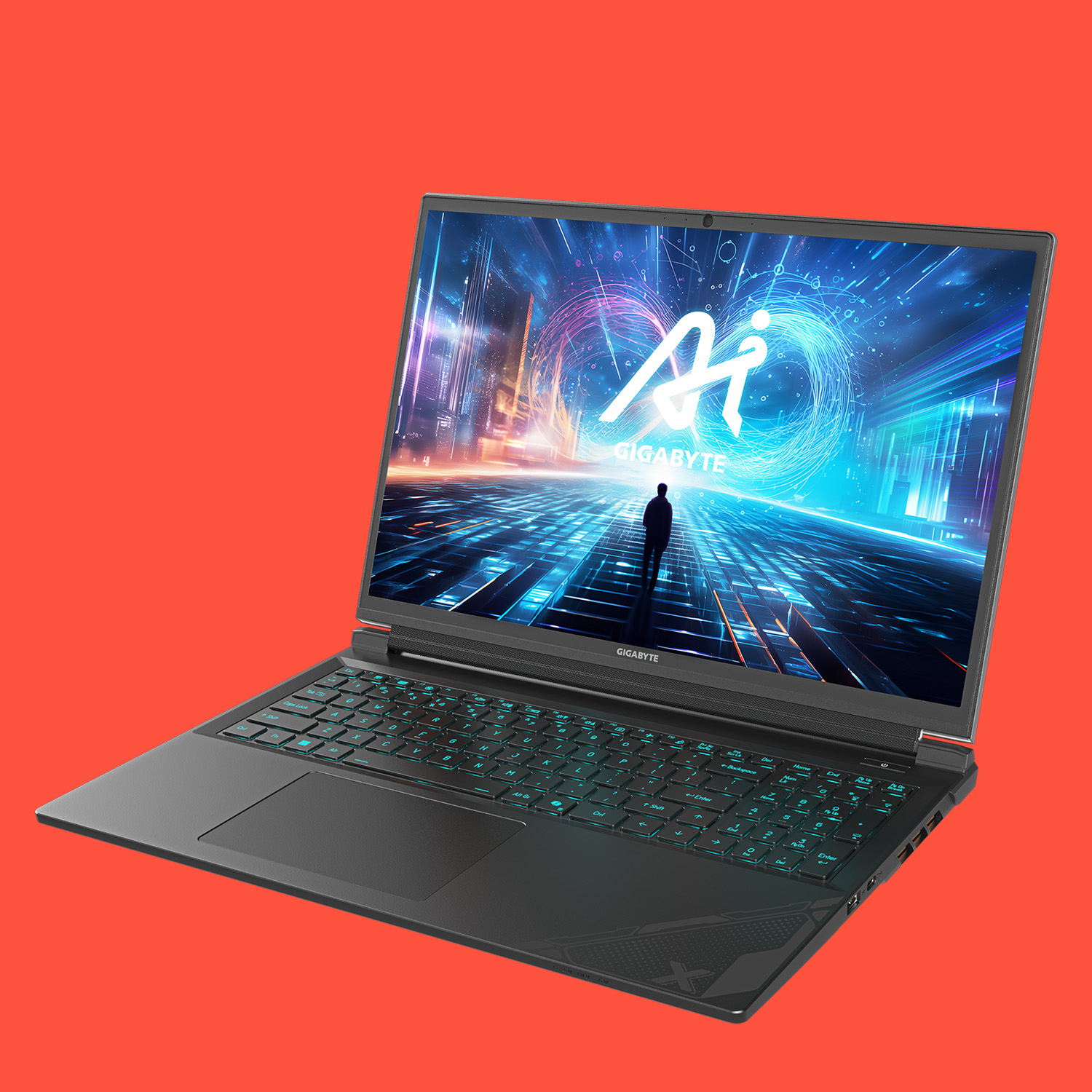
The best budget
Gigabyte has created an excellent budget gaming laptop, and while the screen could be better, it offers a nice combination of components for very reasonable money.
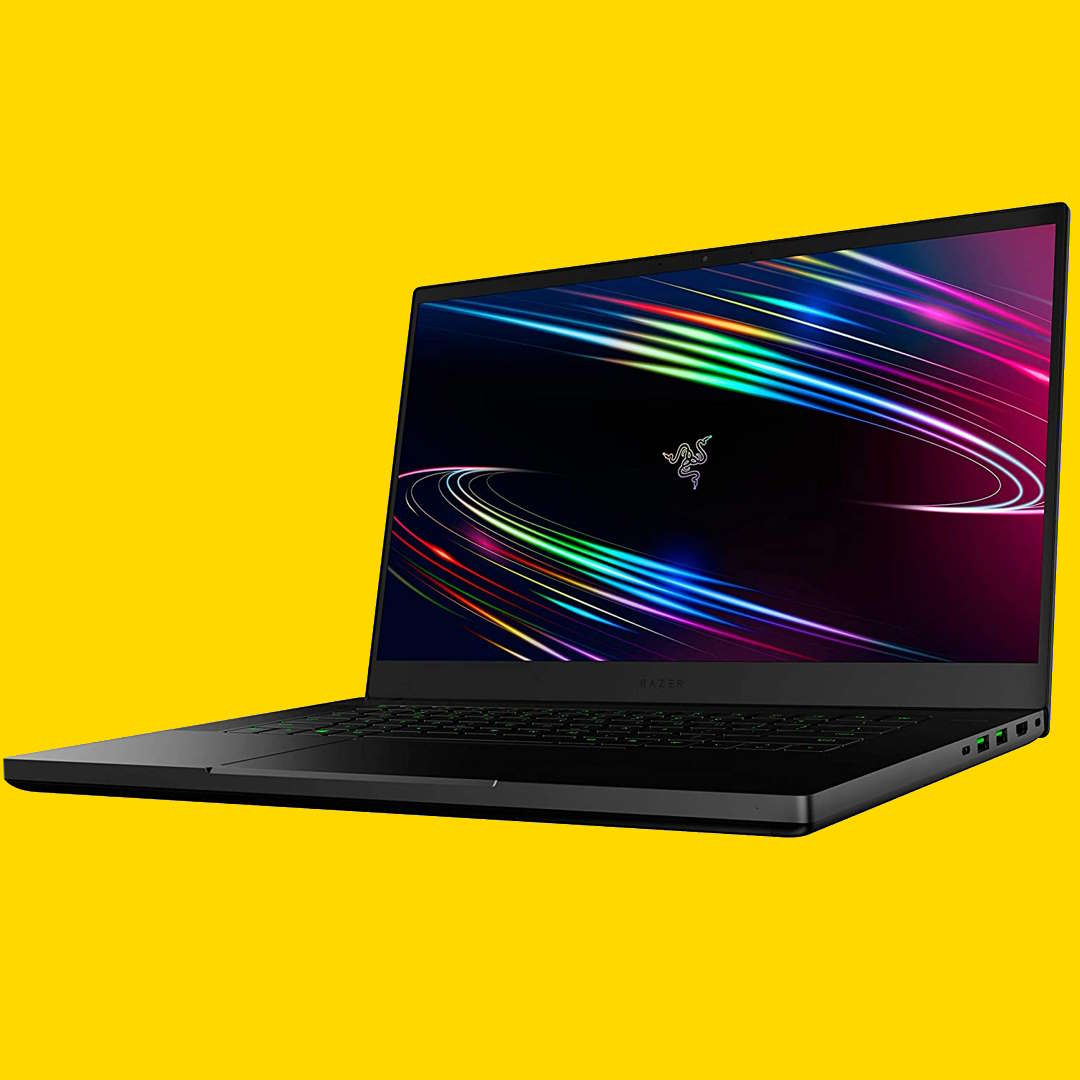
The best 15-inch
The Blade 15 is the holy grail of 15-inch gaming laptops, thanks to a combination of brushed black aluminium and some seriously powerful gaming hardware baked inside.

The best 14-inch
If a 15-inch machine is still too big for your travel requirements, then the G14 is the notebook for you. It's a lovely little device with a fantastic screen, solid specs, and tons of connectivity. The design for 2024 is absolutely gorgeous, too.
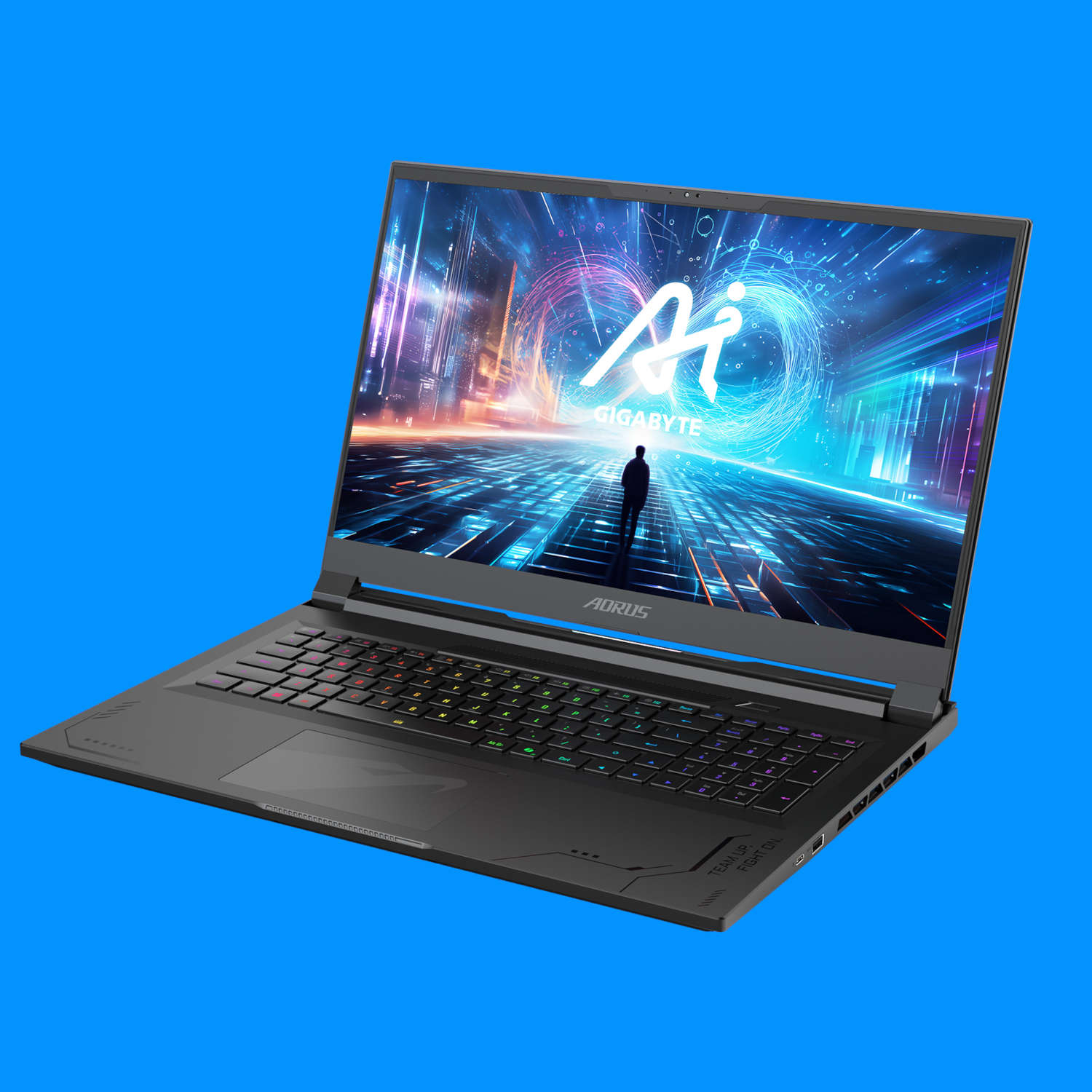
The best 17-inch
The latest Aorus 17X shows that Gigabyte has been paying attention, and has delivered a beefy 17-inch machine that we'd be happy to lug about with us. It's got a great spec, the screen is sweet, and the battery life is decent, too.
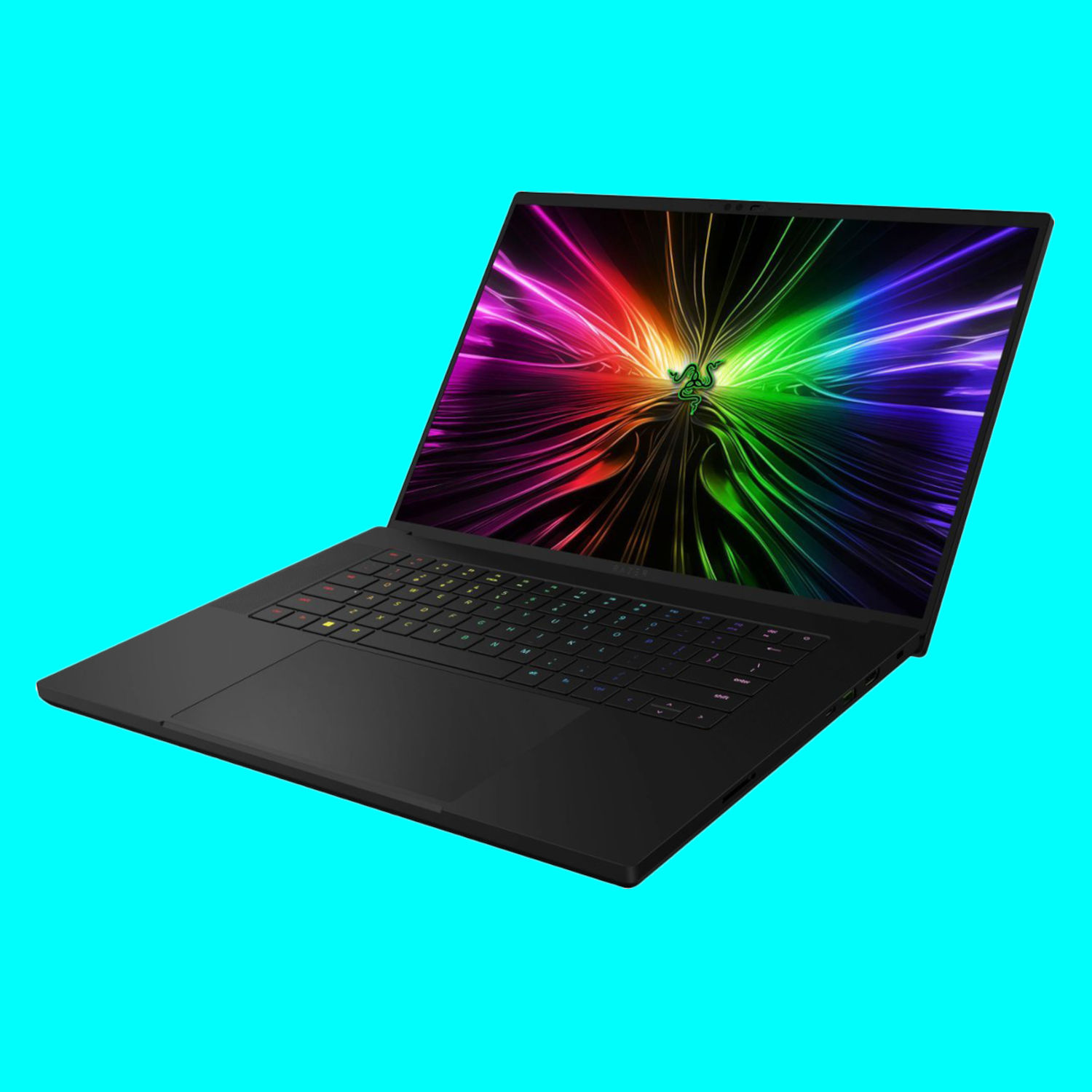
The best laptop screen
This 240Hz 1600p OLED panel is one of the finest we've laid eyes on. HDR content is wonderfully balanced and natural, and your games will look utterly stupendous. There again, if you need the best screen, then you sadly have to pay for it.
Recent updates
Updated March 14, 2025 to add in reference to the upcoming RTX 50-series mobile GPUs and to check over our recommendations—all of which remain the same.
The best gaming laptop
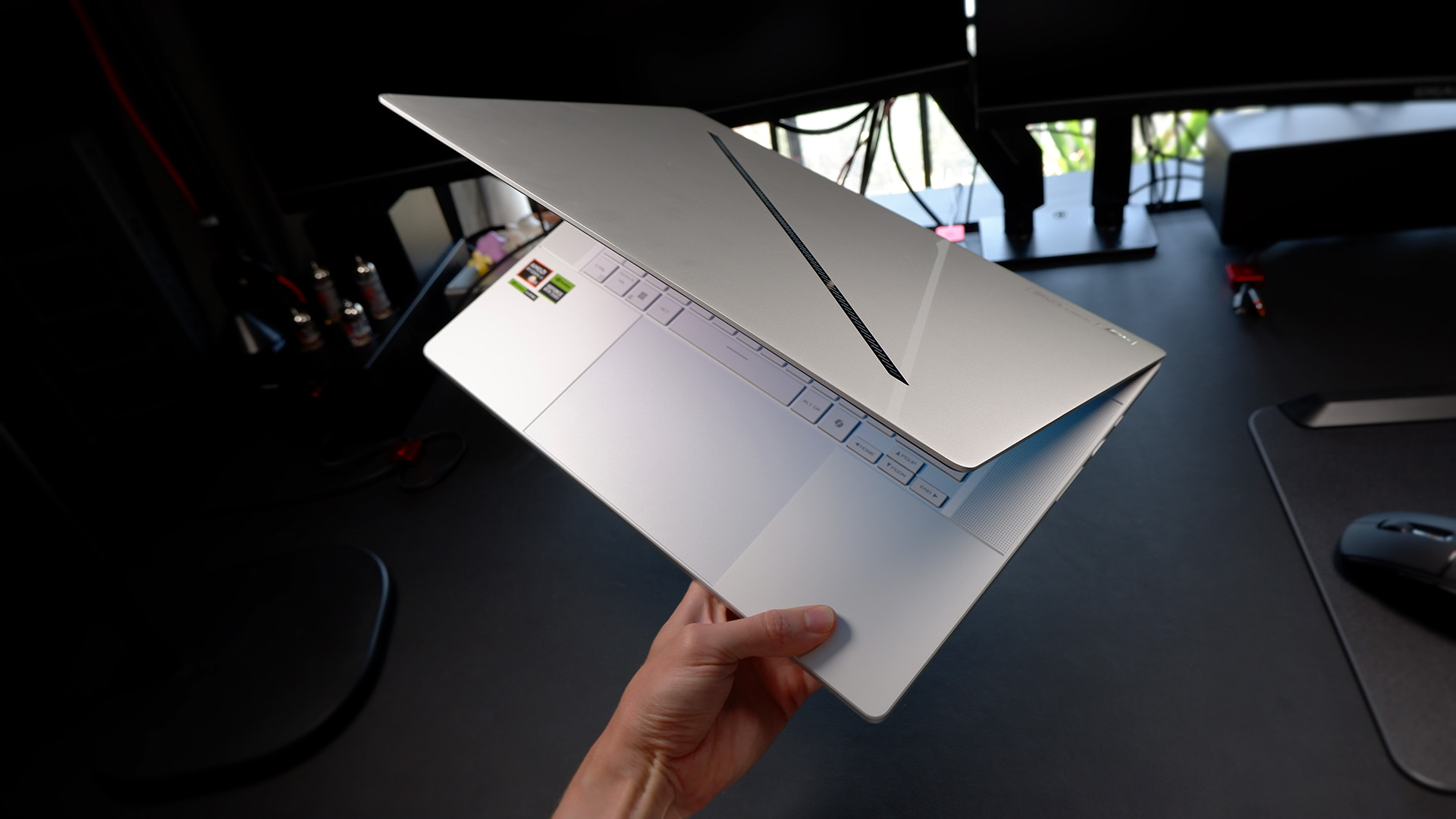
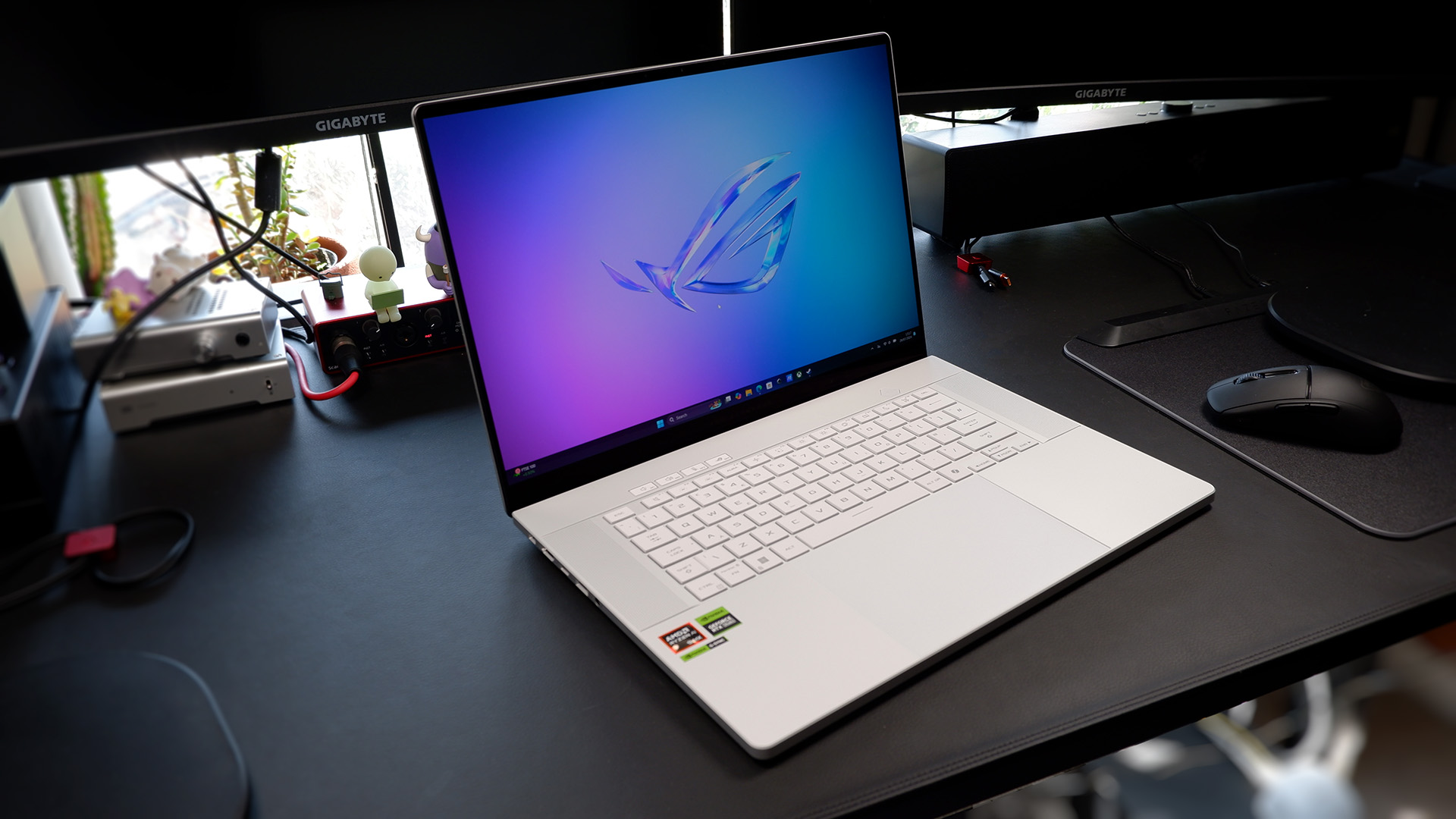
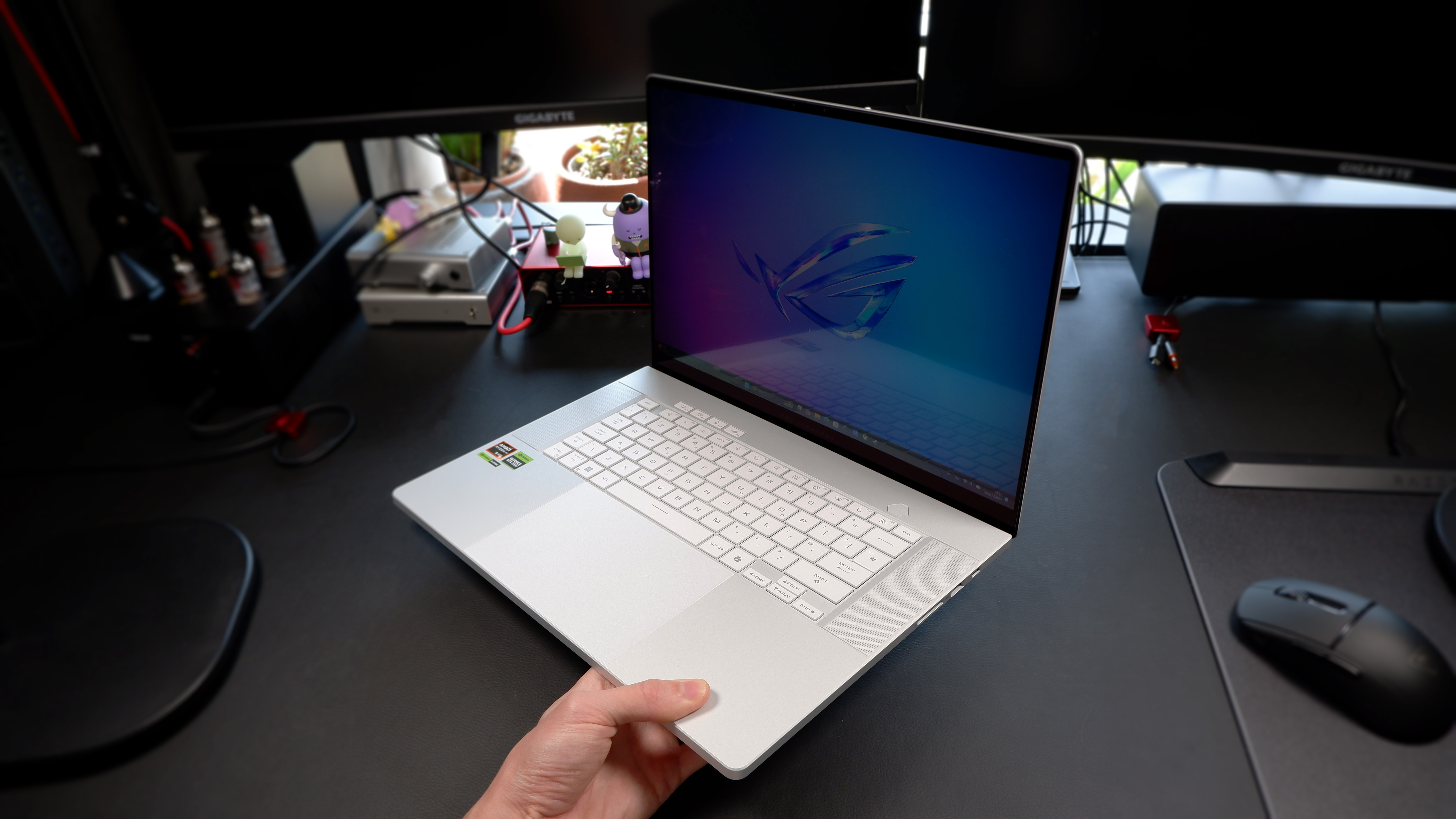
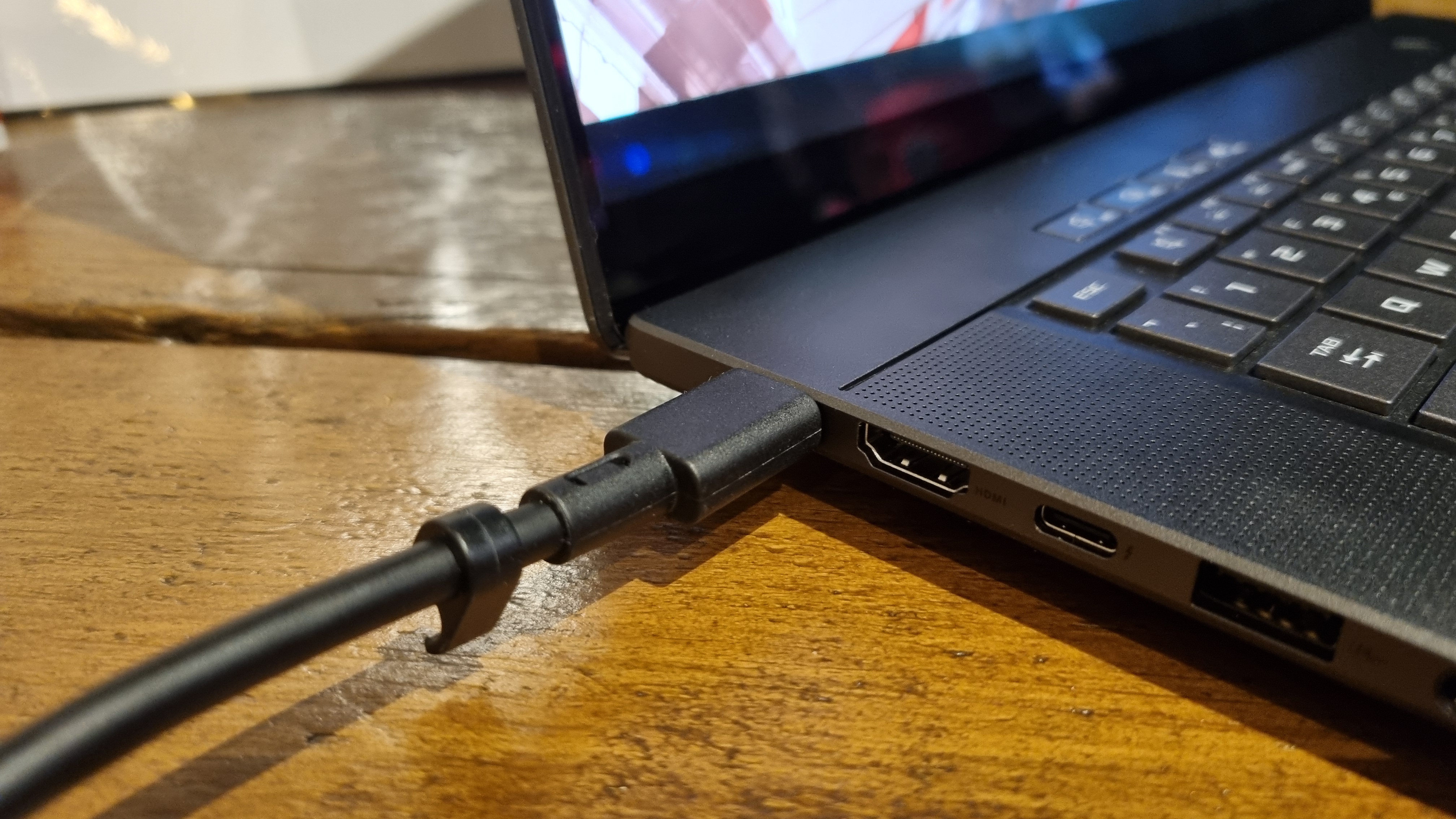


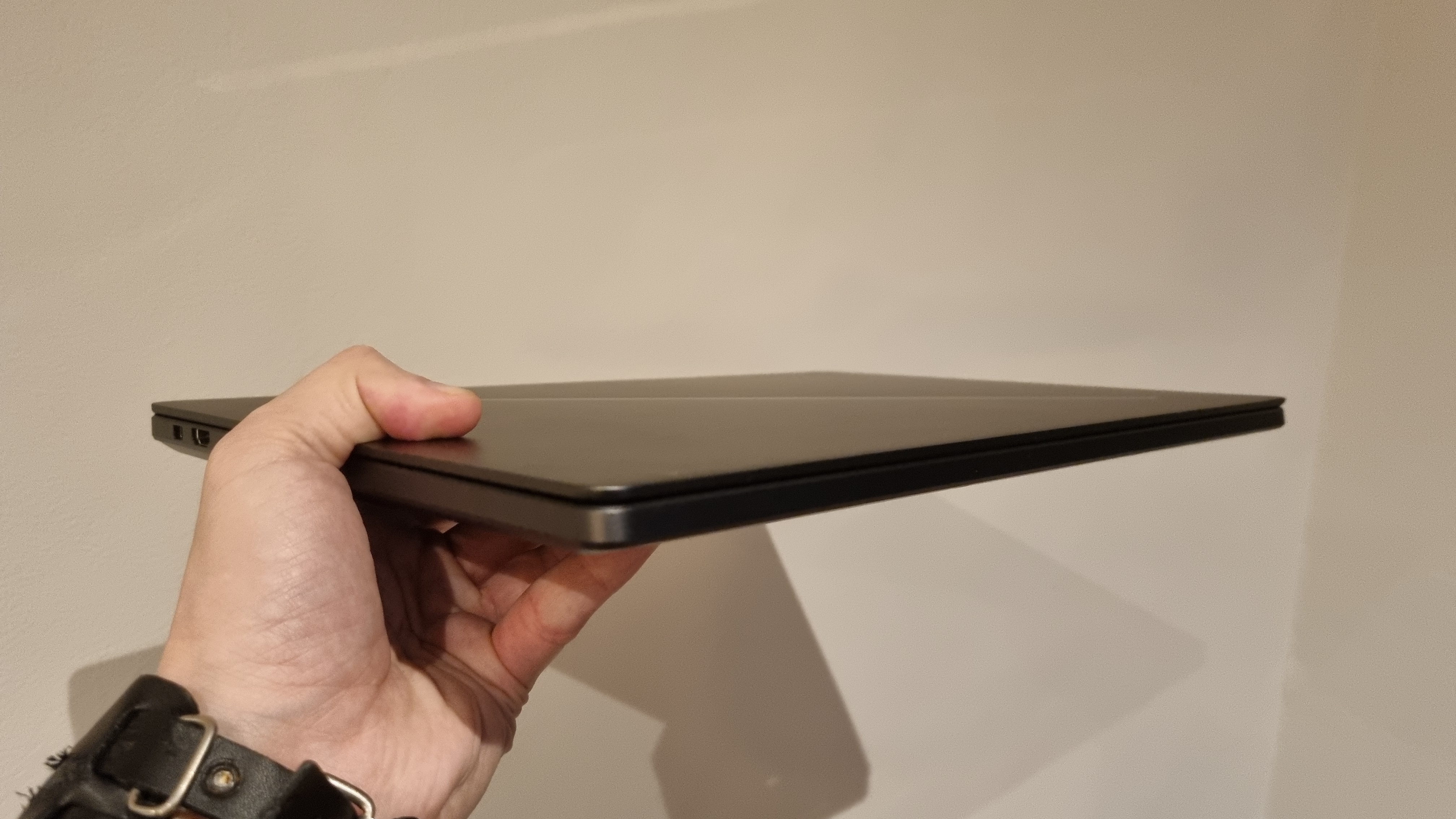
1. Asus ROG Zephyrus G16 (2024)
Our expert review:
Specifications
Reasons to buy
Reasons to avoid
Our favorite config:
Asus ROG Zephyrus G16 | Ryzen AI HX 370 | RTX 4070 | 32 GB LPDDR5x | 1 TB SSD
We were big fans of the Intel-powered G16 when we first saw it, with our only real issue being the mismatch of RTX 4090 and the new slim chassis. But the new Zen 5 Ryzen chips are a huge upgrade over the Intel CPU, and the RTX 4070 is a far better graphics chip for this form factor.
We tested: Intel Core UItra 9 185H | RTX 4090 | 32 GB | 2 TB SSD
AMD Ryzen AI 9 HX 370 | RTX 4070 | 32 GB | 1 TB SSD
✅ You want a genuine mobile gaming laptop: So many gaming laptops are still bricks, with chonky chassis designs and zero battery life. The Strix Point G16 delivers stonking battery life, and even the Intel version comes with that stunning new slim chassis and great aesthetics.
✅ You're willing to compromise on performance for the real-world experience: The Zephyrus G16 isn't the most powerful gaming laptop, but so long as you eschew the RTX 4090 version and opt for either Strix Point+RTX 4070 or Core Ultra 9+RTX 4080 you're getting balanced gaming frame rates in a form factor that could be your daily driver.
✅ You want battery life: There's no other gaming laptop that can boast this sort of genuine gaming battery life. With over two hours of uptime, with a discrete Nvidia GPU running at full tilt, nothing else comes close.
❌ You're all about frame rates and hang the sense of it: This isn't the fastest gaming laptop, but it also doesn't sound like it's going to unleash a tornado into your home and isn't going to melt a hole in your desk/legs. If you want more performance, you need a fatter laptop.
❌ You're on a tight budget: The ROG Zephyrus doesn't come cheap, with equivalent specs that cost a good chunk more than the competition unless you can find a healthy discount. But it has a design and experience you won't find elsewhere.
🪛 The Asus ROG Zephyrus G16 isn't the fastest, nor the best value gaming laptop. But if you want to experience a truly portable gaming machine, that delivers on CPU power, battery life, integrated graphics, and a stunning screen, the new G16 is that. But it also has configs that will deliver great gaming performance, giving you the option to pick a machine that's right for you, but all with that outstanding screen and chassis as standard.
The Asus ROG Zephyrus G16 is now our pick as the best gaming laptop you can buy today. Partly that's because our previous favorite, the Lenovo Legion 7i Pro Gen 8, has been discontinued, but also because the newest G16 is sporting the latest AMD processor… and it's rather stunning.
Asus has seen the light, you see, and removed our biggest concern with the Zephyrus G16: It no longer packs the most powerful mobile GPU around into its otherwise outstanding gaming laptop. If that seems utterly counterintuitive for PC Gamer to be pleased about not having the fastest graphics chip in a laptop, bear with me. When we first tested the Intel Meteor Lake-powered G16, Andy fell head over heels for its new, comely chassis, gorgeous OLED screen, and general all-around goodness.
But he hated that RTX 4090 graphics card. The reason should be fairly obvious when you look at the new slimline Zephyrus G16; there's just not enough cooling potential in that sleek little number to be able to keep Nvidia's top Ada GPU running at its peak performance. That means you're a) leaving a ton of potential performance on the table because of the thermal constraints, and b) it ain't going to be doing any of that quietly.
It was a similar sentiment I expressed when testing the first RTX 4090 laptops, where I found instances of a well-cooled RTX 4080 matching or even outperforming a thermally constrained RTX 4090. That's annoying from a general performance point of view, but when the price delta between laptops sporting those GPUs is so high it's galling.
Here we are, though, with the new AMD Strix Point version of the Zephyrus G16 and AMD has restricted it to a more reasonable RTX 4070 level, presumably because of some of the backlash against the ludicrous RTX 4090 device. That's a GPU which fits better in this gorgeous unibody chassis and pairs beautifully with the new AMD Zen 5 CPU.
The Ryzen AI 9 HX 370 has a stupidly zeitgeist-y name—'hey, what if we literally put 'AI' in the name?'—but it's an excellent mobile chip. The mix of Zen 5 and Zen 5c cores is similar to Intel's Performance and Efficient cores, but you get more of the good stuff with AMD's approach as both the big and small cores in the Strix Point chip are almost equally capable. They're also both capable of SMT, which means you get 12 cores and 24 threads in the HX 370 while the Intel Core Ultra 9 offers 16 mixed cores, but just 22 threads.
Either way, the Ryzen chip beats the best Intel in both single and multi-threaded benchmarks, which also helps give it some gaming grunt, too.
It also comes with the new Radeon 890M integrated GPU, running on the mildly updated RDNA 3.5 architecture. It sports more compute units than the 780M which graces the best gaming handheld PCs, and delivers genuinely impressive 1080p frame rates. With the Zephyrus G16, then, you can take its already excellent battery life using the discrete GPU, and massively boost that by just using the integrated graphics when you're on the go.
That discrete RTX 4070 GPU isn't the fastest chip around, however, especially when limited to a 105 W TGP here, but it will still deliver good gaming performance at even the native resolution of the lovely OLED panel. If you want more gaming grunt, while we wouldn't countenance going up to the RTX 4090, you can still buy the RTX 4080 version in Intel trim. It's still a gorgeous laptop, and its cooling is far more able to cope with the lower-power GPU than the big boi RTX 4090.
Basically, there are now some great options with this 16-inch Asus laptop, whether you need the raw CPU processing power, proper gaming performance, or a thin and light performer with great battery life that isn't going to weigh you down. What it is going to do, however, is drain your bank balance, especially if you want the latest Ryzen AI version. There's currently a hefty price premium on those models, making them very expensive RTX 4060 or RTX 4070 gaming laptops when compared to some of the competition. However, we have seen good deals on the Intel-based ones, with the RTX 4070 G16, still with the great chassis and gorgeous OLED screen and for only a little more than other RTX 4070 notebooks. Just keep an eye out for the sales, is my advice.
Read our full Asus ROG Zephyrus G16 Core Ultra review.
Read our full Asus ROG Zephyrus G16 Strix Point review.
The best budget gaming laptop
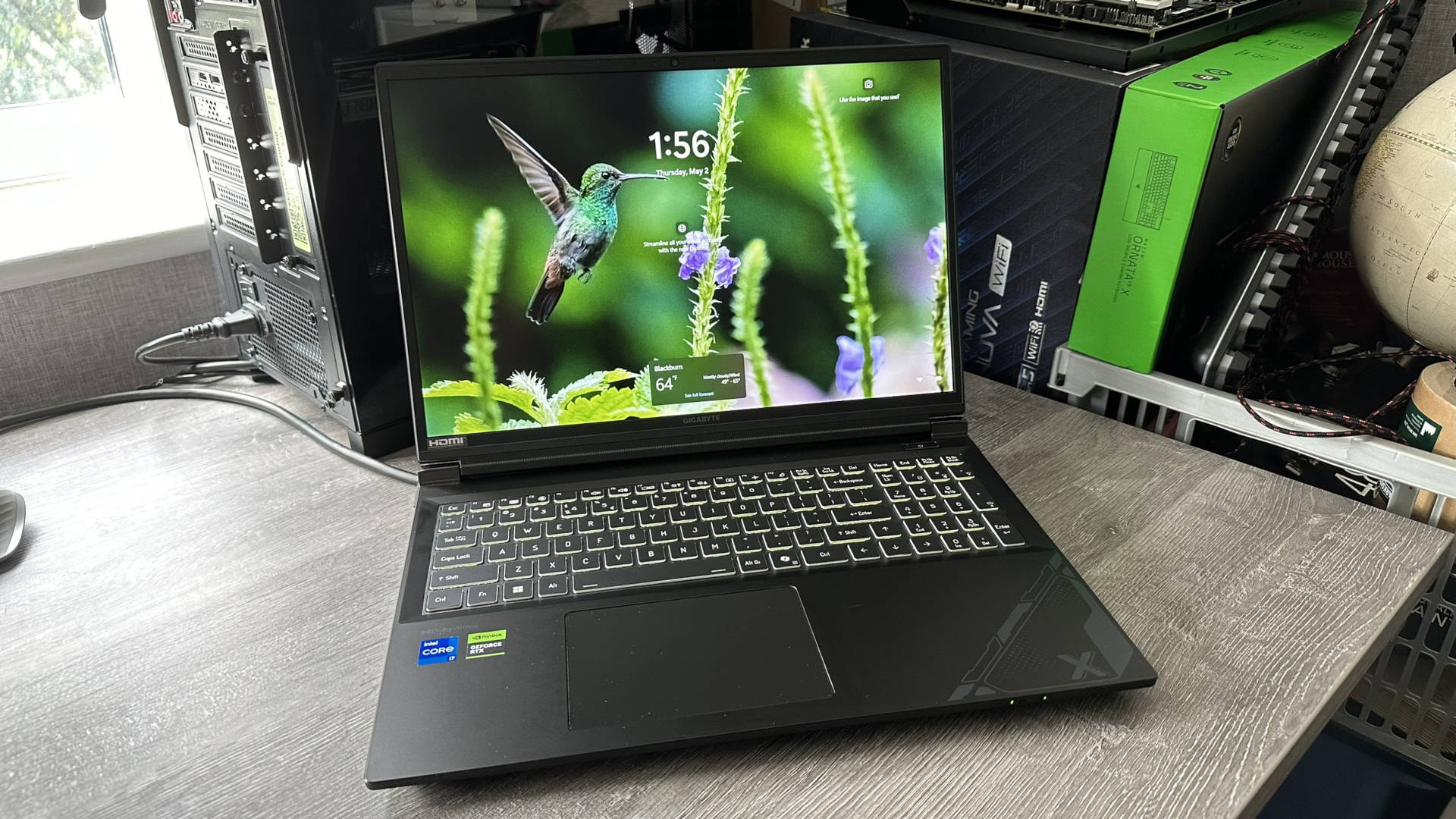
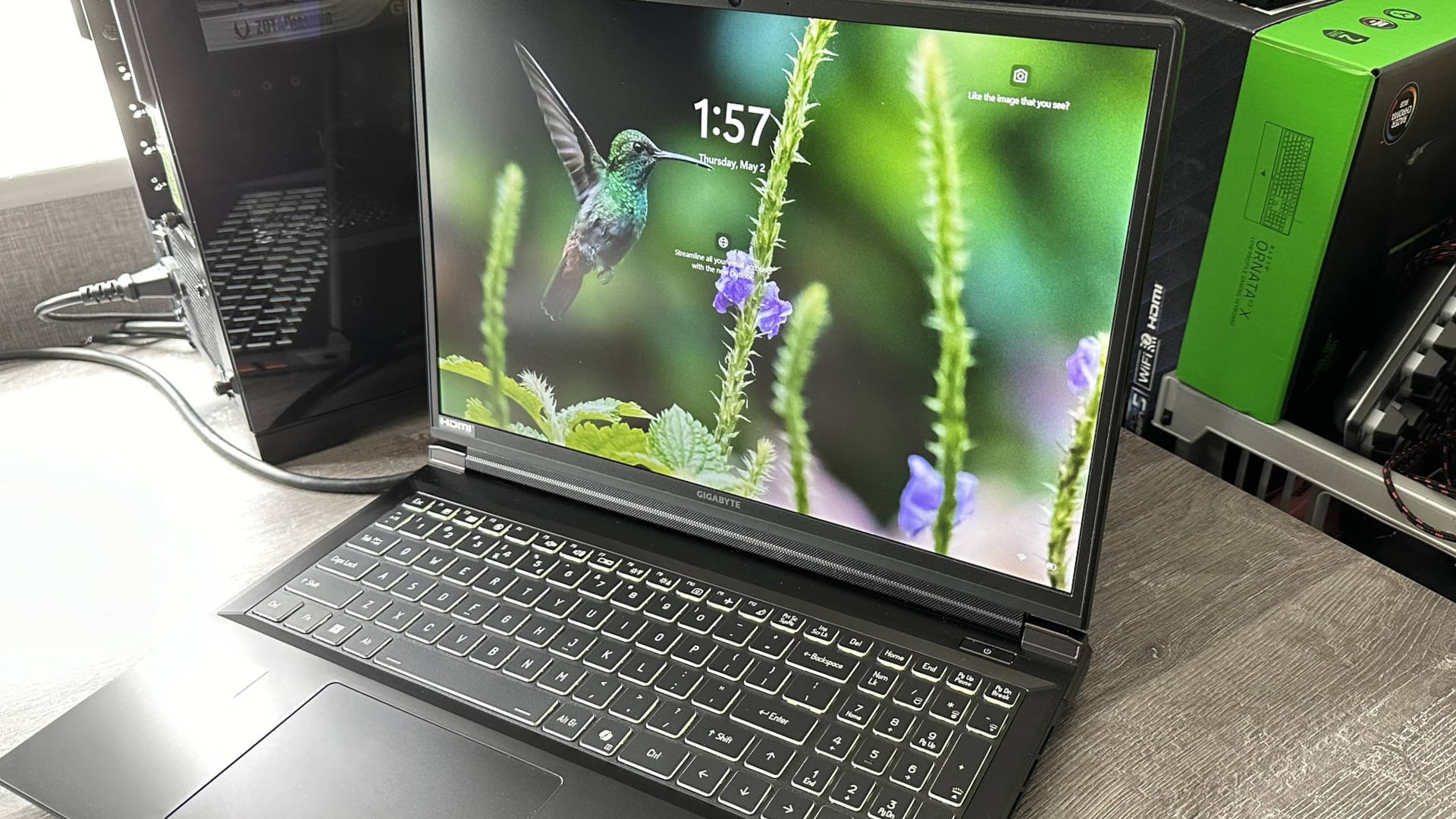
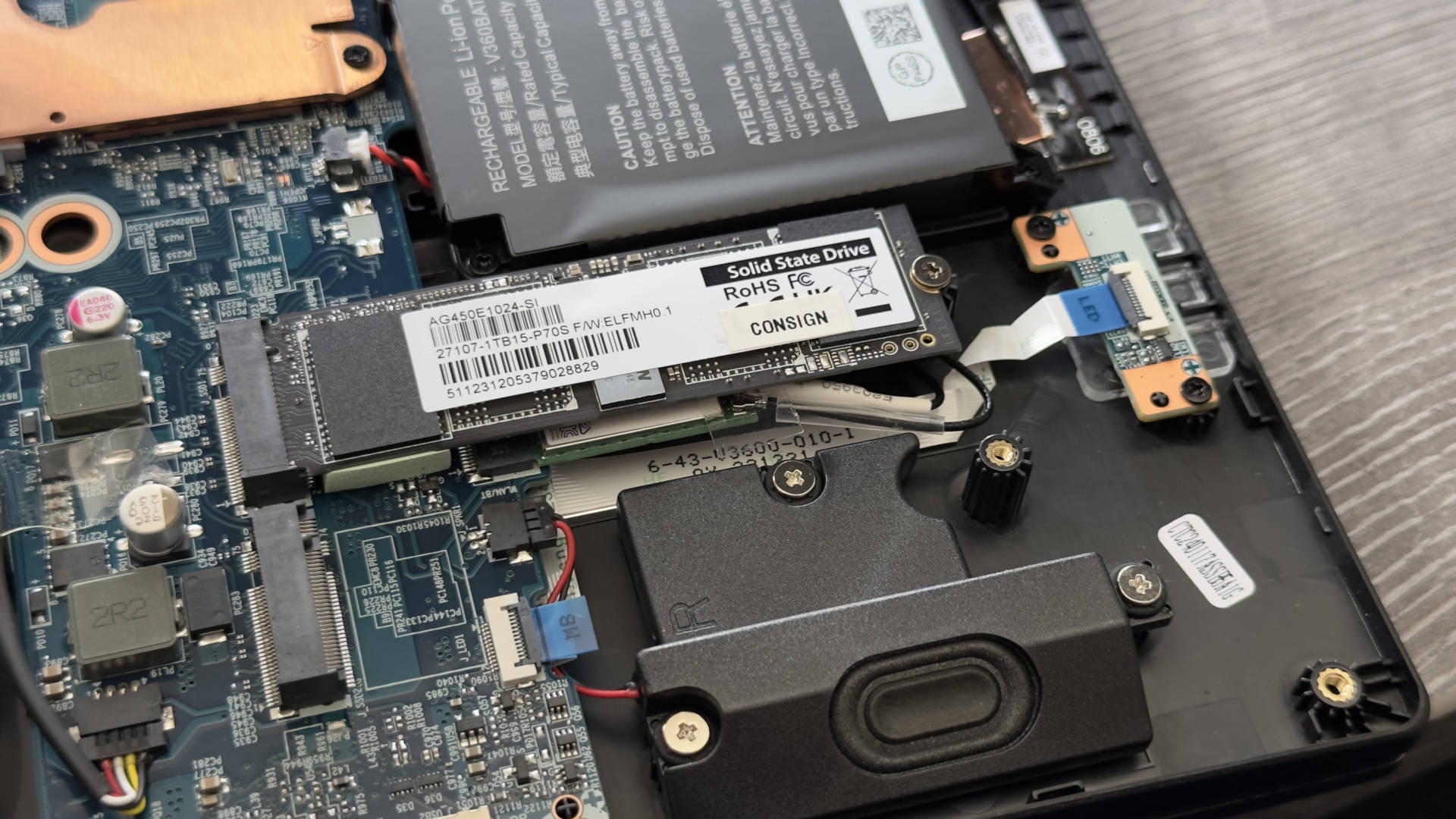
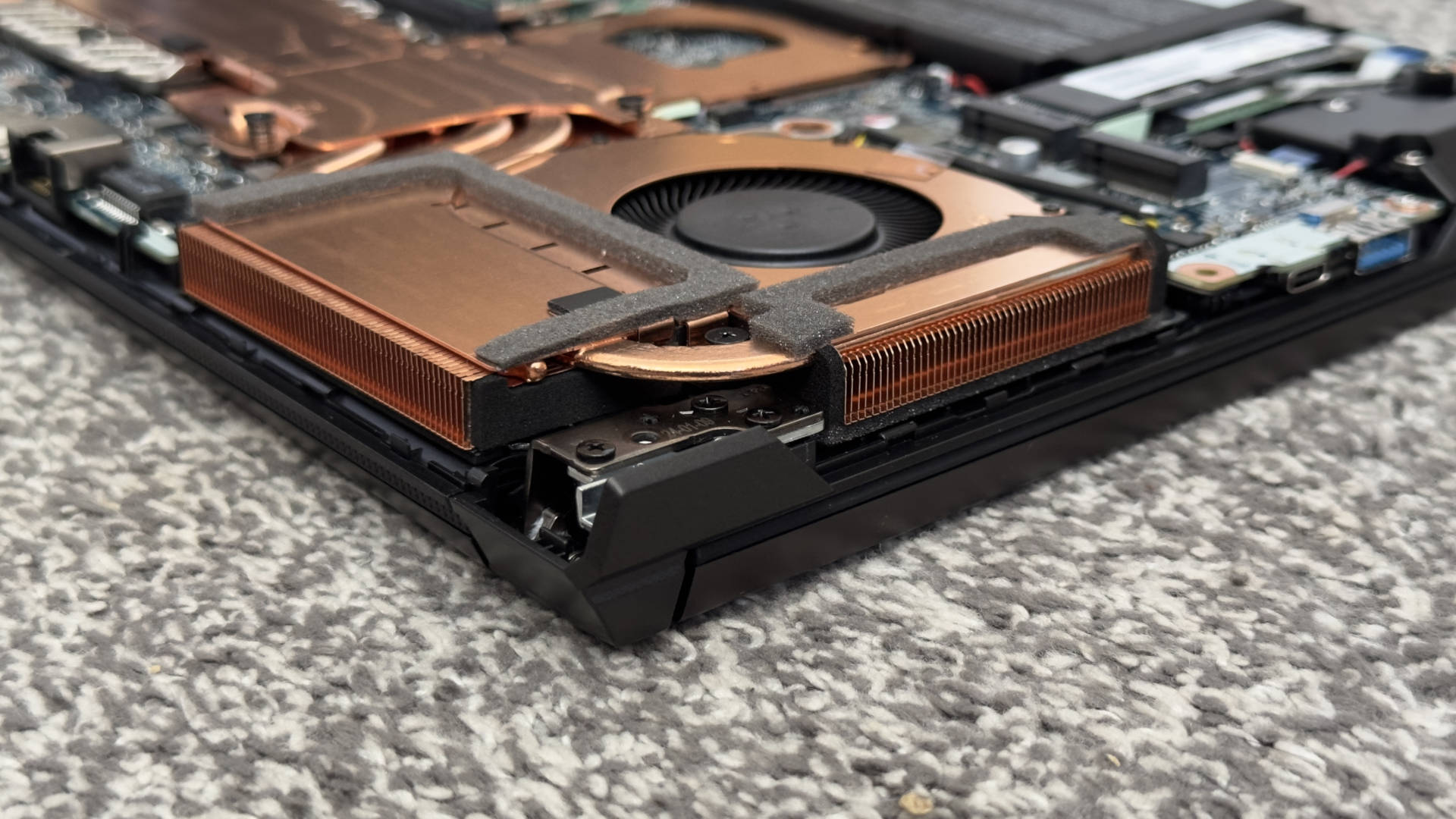
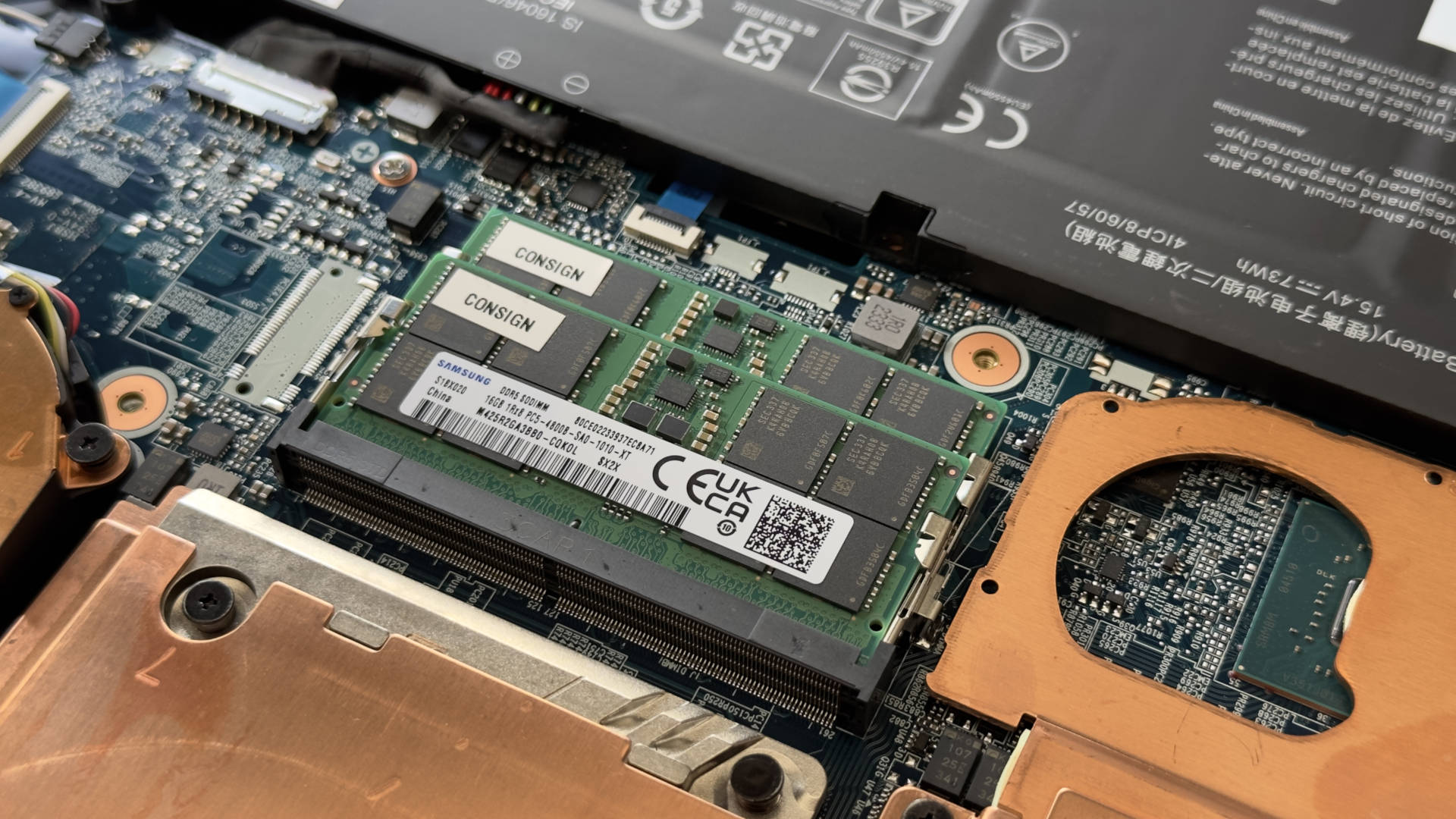
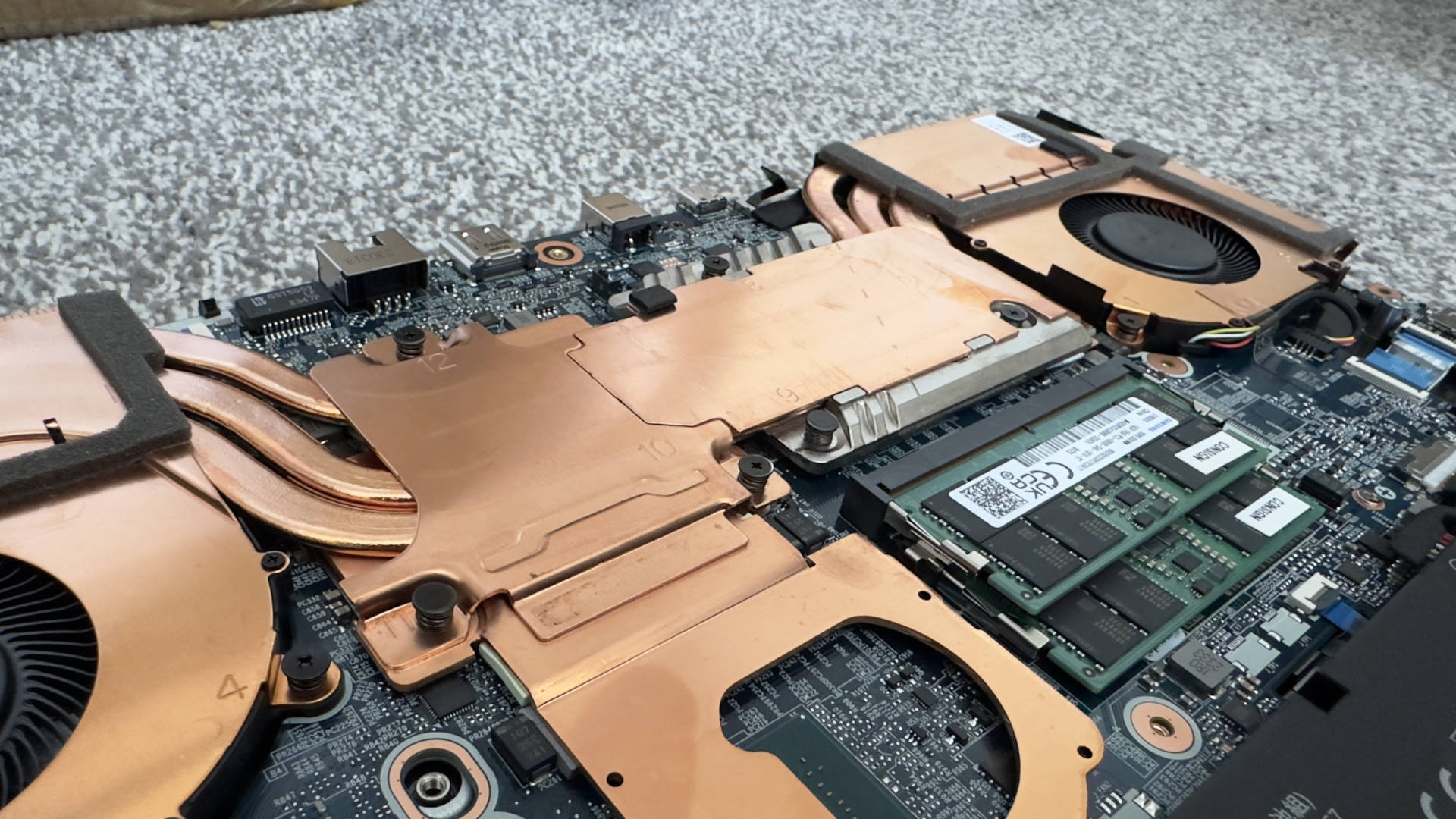
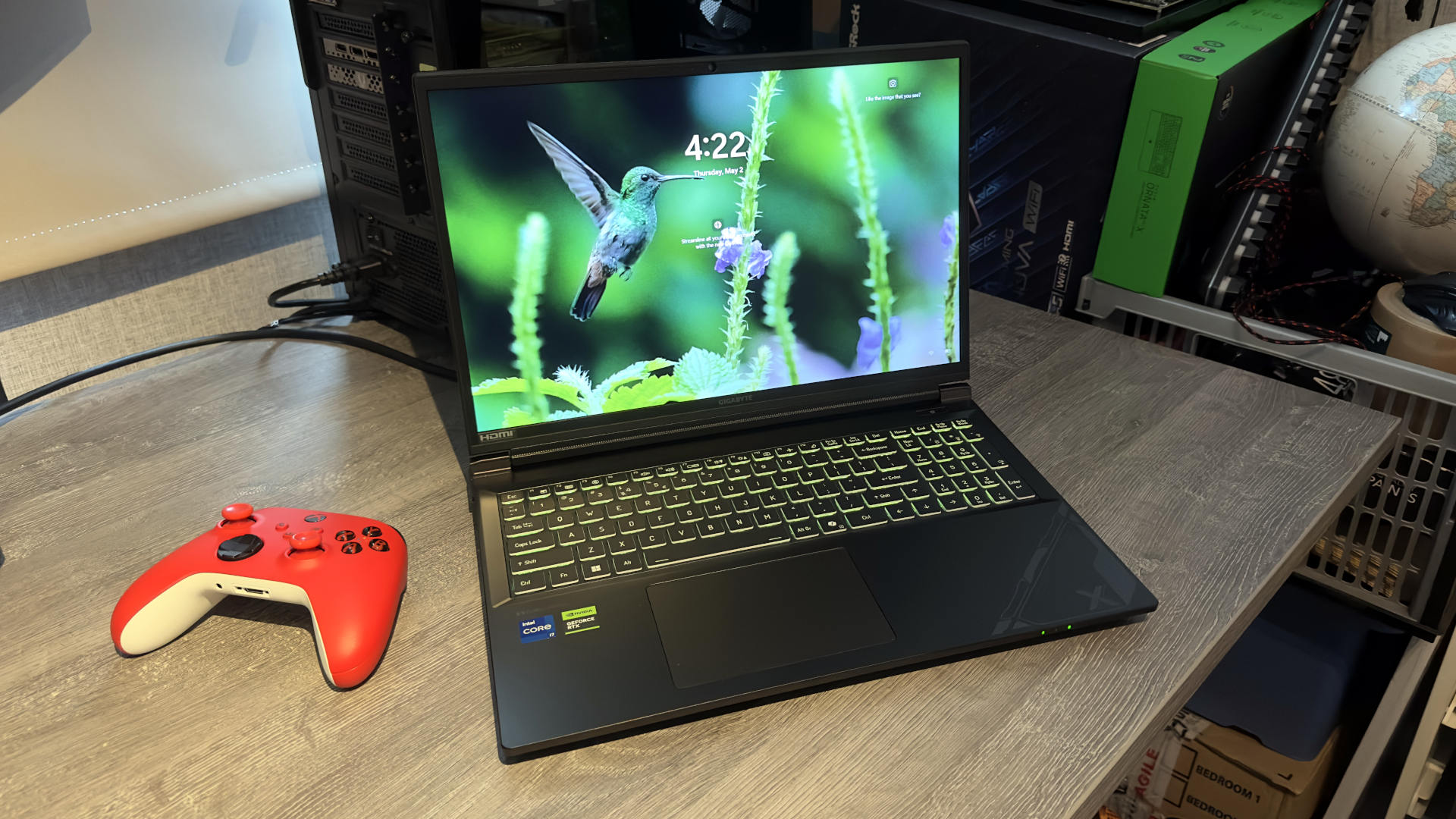
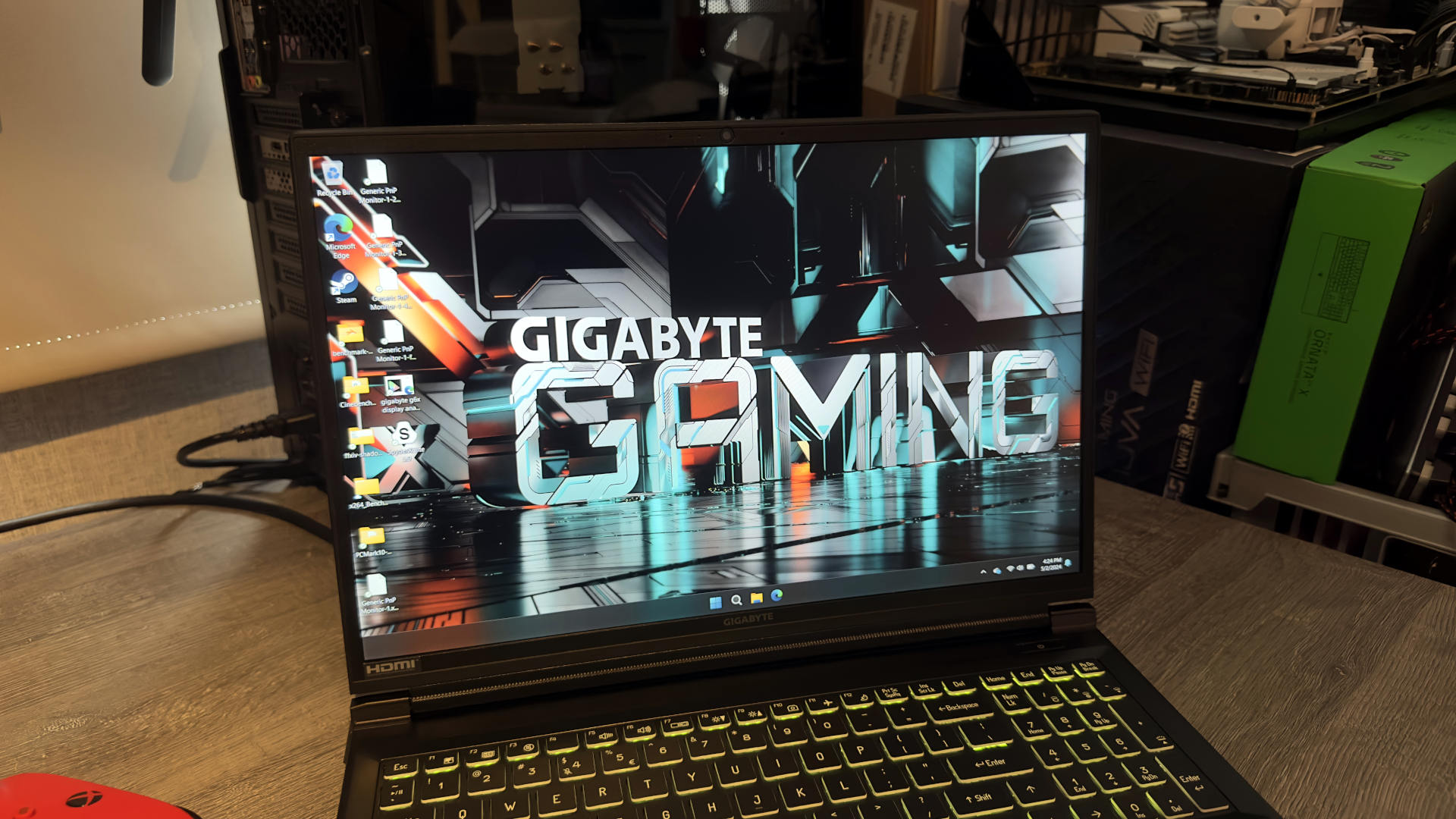
Specifications
Reasons to buy
Reasons to avoid
Our favorite config:
Gigabyte G6X (2024) | Intel Core i7 13650HX | Nvidia RTX 4060 | 16 GB DDR5-4800 | 1 TB SSD
With the specs we'd expect for this sorta money stuffed inside a well-to-do chassis, there's no arguing with the Gigabyte G6X as a great budget gaming laptop. You could save a bit of cash on the 16 GB model, however. You'd get by just fine in games without more RAM, and you could always upgrade at a later date.
We tested: Intel Core i7 13650HX | Nvidia RTX 4060 | 32 GB DDR5-4800 | 1 TB NVMe SSD
✅ You want solid 1080p gaming performance: With a decent RTX 40-series GPU at its core and a speedy 1080p screen, the G6X offers a simple, straightforward gaming experience.
✅ You want plenty of storage: The spare NVMe SSD slot within the G6X is easily accessed. Just a couple of screws to expand your storage even further.
❌ You want silence: The fan noise on the G6X is noticeable. Like, really noticeable. That's the same as most gaming laptops, though this is definitely not on the quieter end of the spectrum.
❌ You like a detailed screen: The 16:10 aspect ratio helps a bunch here, but it's still only just over a traditional 1080p resolution. That means a lot less pixels compared to 1440p or 4K.
🪛 The Gigabyte G6X (2024) might not make a major splash with its standard specification, but it's a healthy balance of performance, power and price. That's what counts for the best budget gaming laptop.
The best budget gaming laptop is the Gigabyte G6X (2024). It takes the place of the Gigabyte G5 we had in this spot previously, mostly because it offers more affordable gaming performance but with newer, improved parts inside.
The model we reviewed contains a Core i7 13650HX, which is not actually Intel's most recent mobile gaming processor generation. However, that's an omission we're happy to make. They're mostly the same and the six P-cores and eight E-cores on this Core i7 are plenty for our needs.
That chip is combined with a 105 W RTX 4060—that's actually a large power budget for this GPU, and that shows in the performance it delivers, as evidenced in the benchmark charts below. What's more, it's a small dose faster than the outgoing Gigabyte G5 KF we've replaced in this spot—those hardware changes do count for something in games.
Let's talk about the screen. It's a full 16 inches in size, with a 16:10 aspect ratio, 1920 x 1200 pixels, and a refresh rate of 165 Hz. It's pretty darn good, in other words.
Importantly, that screen is a good fit for the hardware beneath it. Though it does suffer from a bit of the case of the blands—that is to say, it's a bit dull and overly dark. These budget laptops often tend to suffer this fate and the G6X is no different to its predecessors on this point. Ultimately, we'd call it "perfectly average."
The noise from the fans when they're running at full bore is also quite average, which means this laptop is rather loud. That's just part of the parcel with a gaming laptop, but more so these affordable models.
The design of this laptop is pretty standard stuff, too. Though it's decisively less 'gamery' than some. A single zone of RGB LEDs illuminates the keyboard and there's room for a reasonably big trackpad. Within the chassis, you can easily access the spare NVMe slot should you wish to bolster your storage above 1TB, which you probably will, and this machine comes with two DIMM slots. In our review model, these were accommodating 32 GB of DDR5-4800—though you could save some cash on the 16 GB model and get by in games just fine. It wouldn't be difficult to swap out for a higher-capacity kit down the line.
Overall, the Gigabyte G6X offers exactly what we ask for in a budget gaming laptop. You could happily game on one right out of the box, though it's an easily upgradeable platform if required.
Read our full Gigabyte G6X (2024) review.
The best 15-inch gaming laptop
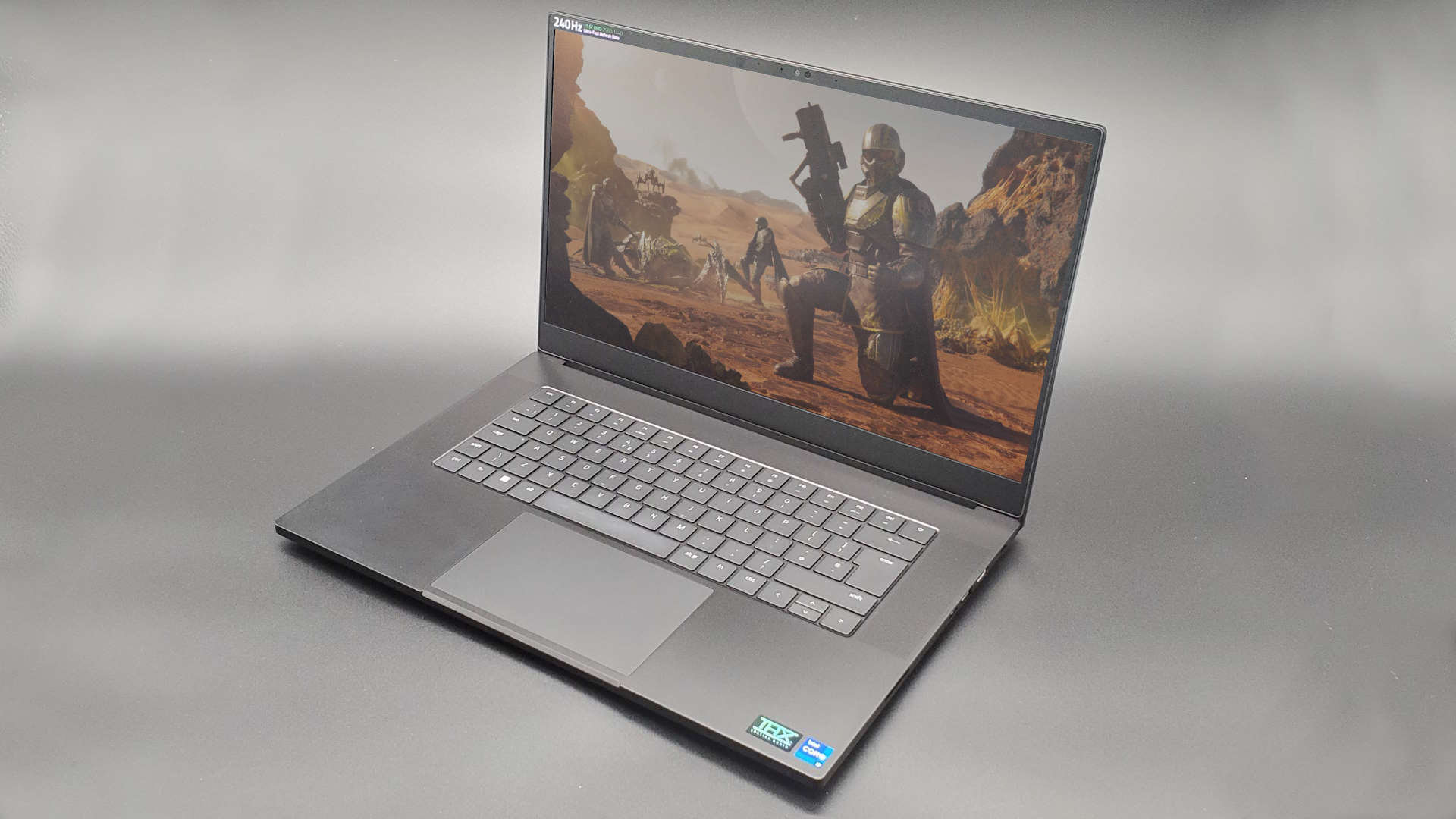
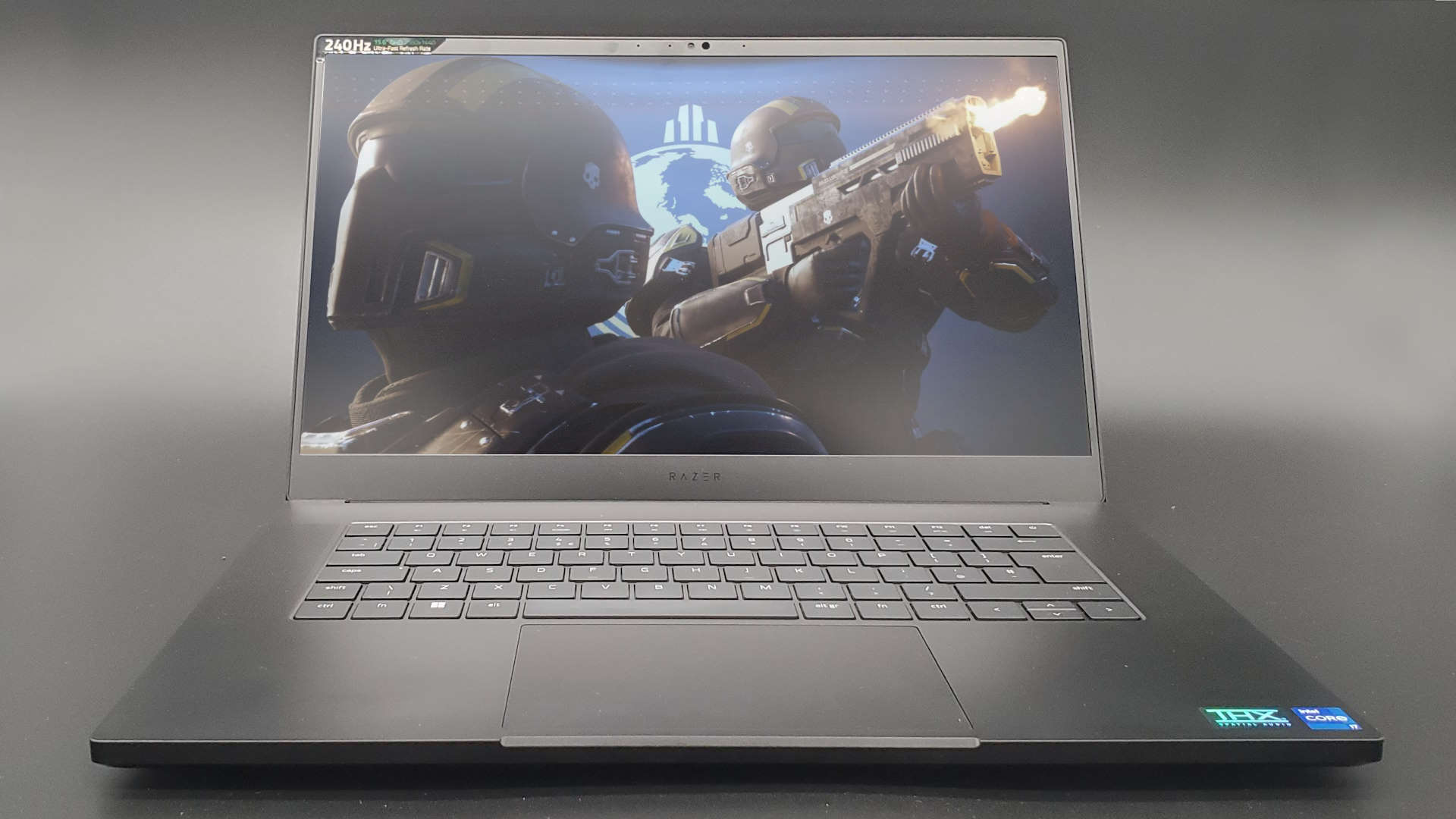
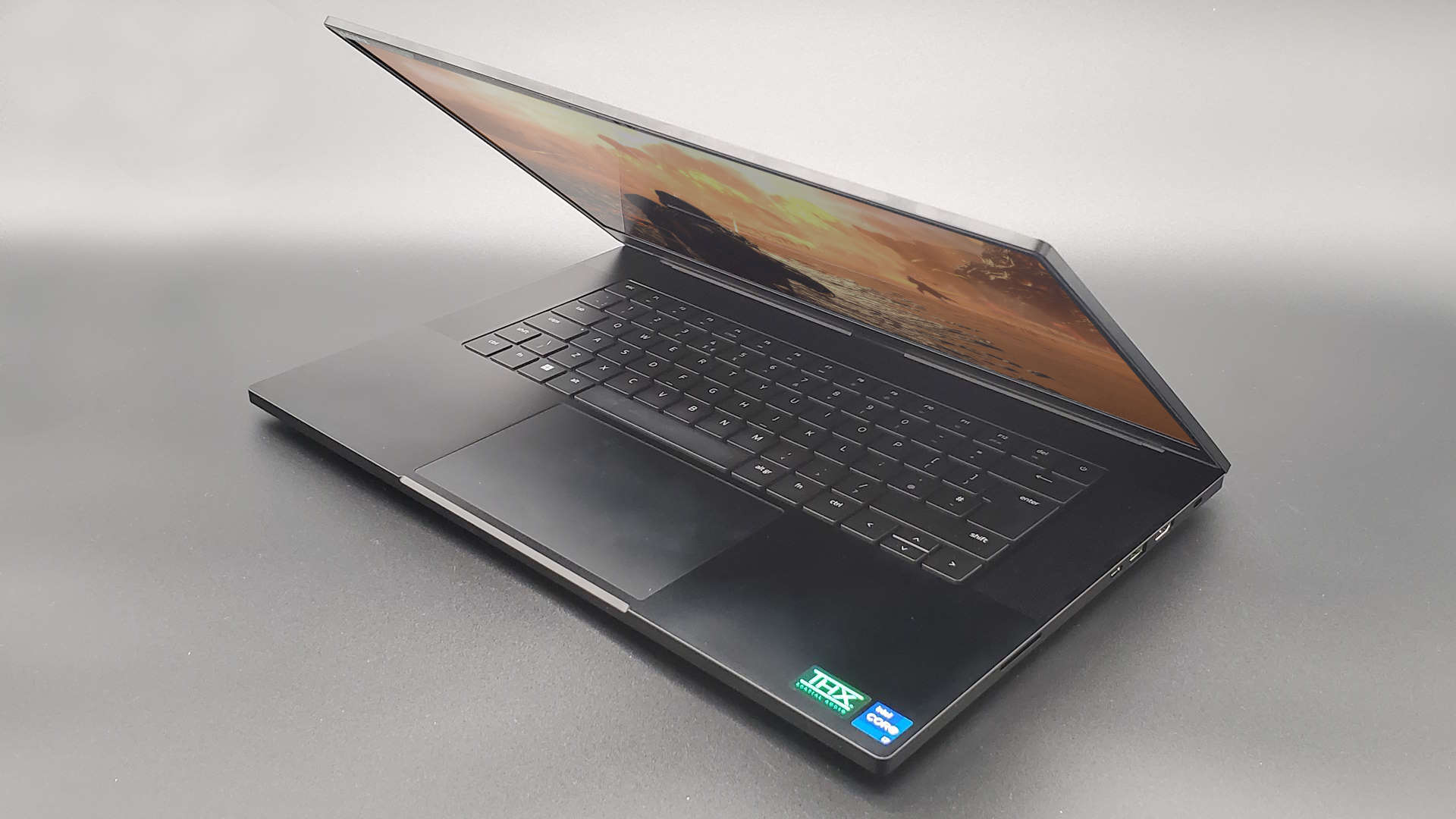
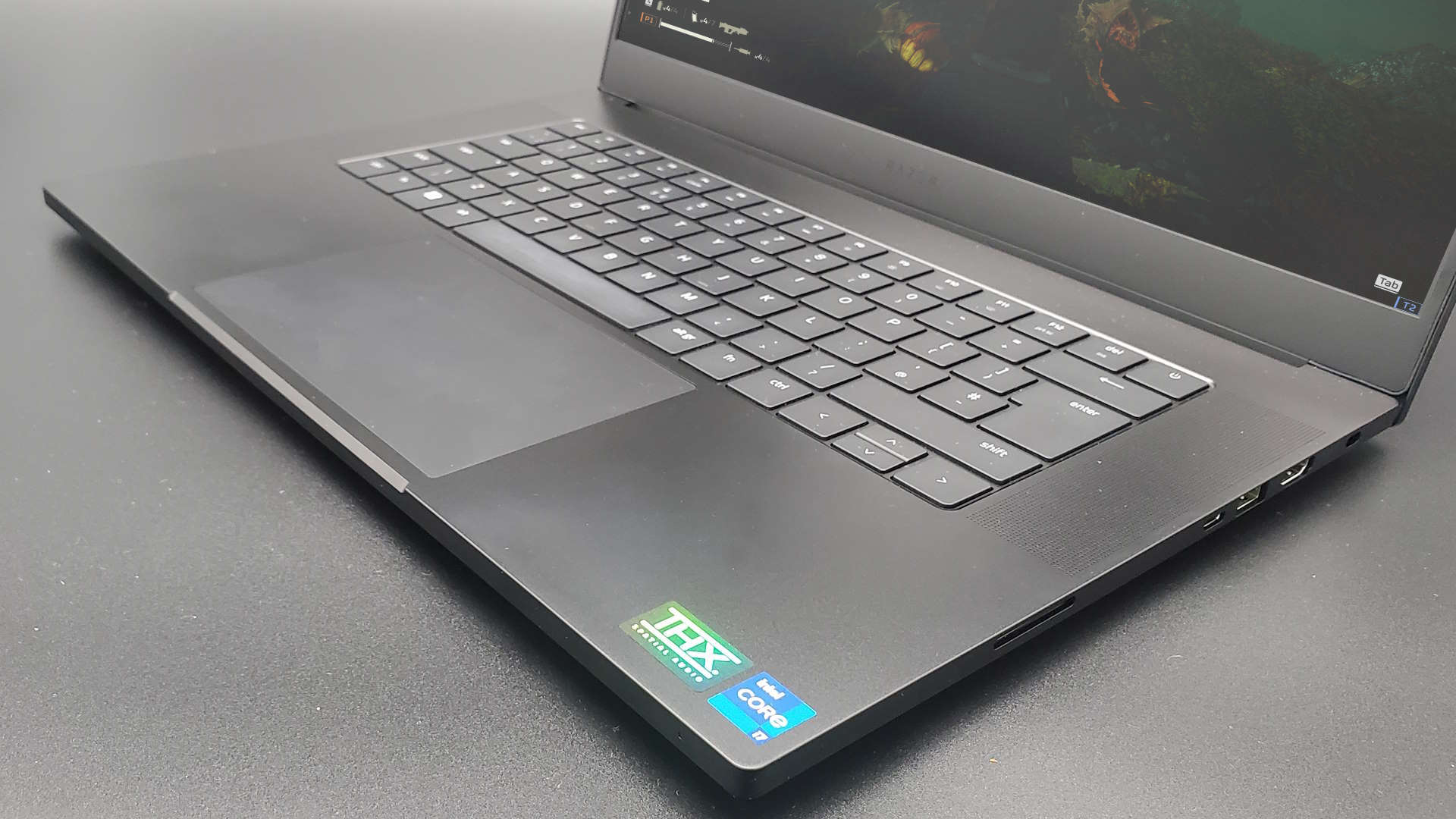
Specifications
Reasons to buy
Reasons to avoid
Our favorite config:
Razer Blade 15 | Intel Core i7 13800H | Nvidia RTX 4070
In this slimline chassis, the Nvidia 4070 will deliver fantastic frame rates, even at the 1440p resolution of the gorgeous 240 Hz OLED screen. You also get a 1 TB PCIe 4.0 NVMe SSD and 16 GB of dual-channel DDR5-4800 RAM.
We tested: Intel Core i7 13800H | Nvidia RTX 4070 | 16 GB DDR5-5200 | 1 TB NVMe SSD
✅ You want a premium build: Razer's Blade 15 is as close as you're going to get to a gaming MacBook aesthetic. Well, apart from that big green logo on the lid...
✅ You want options: There are a huge number of Blade 15 configurations out there, going from the Base to the Advanced systems, with a variety of price points.
✅ You want battery life: If we're honest, game time away from a plug is always limited in a modern gaming laptop. But the Blade 15, even with the RTX 4080 in it, is the best performing on that front of all the machines in this list.
❌ You need peak plugged-in performance: That slimline chassis is an essential part of the Blade 15's charm but that is also why Razer limits the TGP of the graphics cards in them.
❌ You're on a budget: Razer's gaming laptops are not cheap, and always come with a price premium on top of the likes of Asus or Acer's more affordable machines.
🪛 The Razer Blade 15 has long been our favorite 15-inch gaming laptop. It mixes style with performance and a wealth of screen real estate and comes in a wide variety of configurations. Now, those configs may not necessarily suit every budget because of the Razer price premium, but if you're willing to pay for the absolute best the Blade 15 deserves to be near the top of your list.
The most recent spin of the Razer Blade 15 once again improves on one of the greatest gaming laptops ever made, and the best 15-inch gaming laptop today. It has the same gorgeous CNC-milled aluminum chassis as its predecessor, only this time it can house one of Nvidia's latest RTX 40-series GPUs and an Intel 13th Gen Core i9 CPU.
Though its days may well be numbered. Right now, it doesn't look like Razer is going to release a new Blade 15 anytime soon.
In a way, that's understandable given the Blade 16 isn't much bigger yet can house a larger screen. But, importantly, it is thicker. Yes, the Blade 16 is a fair bit chonkier than the older Razer chassis, and I very much prefer the more svelte, older design.
Missing out on the 14th generation of Intel's mobile Core CPUs isn't an issue in real terms, however, as the Raptor Lake Refresh is just that, a mild refresh of the 13th Gen chips. So, with the current Razer Blade still sporting up to the RTX 4070 as its GPU component it still represents the best 15-inch gaming laptop you can buy.
As hinted at before, that scale does limit the screen. In the Blade 15 you have a QHD 240 Hz panel, so that's a 2560 x 1440 native resolution. I mean, that's still great and all, but I've been spoiled by the 16:10, 1600p mini-LED displays modern laptops can offer. It does also mean the Blade 15 has a fairly sizeable 'chin' by which I mean a large bezel along the bottom side of the panel.
I'd maybe want the screen to be brighter, but it's certainly responsive and that 240 Hz refresh makes it feel super slick. It's sharp, too, with that 1440p res squished down to only 15 inches of real estate.
The gaming performance certainly isn't impacted by the lack of the latest CPU, with the 115 W RTX 4070 proving a very capable gaming GPU, even in the confines of the slight Blade 15 chassis. The RTX 4070 inside our review machine easily outpaces the mobile RTX 3080 in the last version we tested of Razer's 15-incher, and that's without the added benefits of DLSS 3 and Frame Generation.
The issue, as ever with Razer gaming laptops, is the price premium. Our pick for the best gaming laptop, the 16-inch Asus Zephyrus G16, is consistently much cheaper than the top RTX 4070 SKU of the Blade 15. It is just as nice a device, with a unibody aluminium chassis deliberately designed to ape that of the Razer machine, meaning if you're on a tight budget it's hard to recommend the Blade.
But it is a lovely device, even if it has barely changed in the past few years. It's also pretty well connected, with a pair of Thunderbolt 4 ports and three USB 3.2 Type-A connections, too. There's also the requisite combined 3.5mm audio jack and a full HDMI 2.1 output.
For me, it's still the best 15-inch gaming laptop on the scene and as ever really does nail that gaming MacBook aesthetic, which has always made the Blades such a hit, but it is getting increasingly hard to find given that it wasn't refreshed in the last round of Intel CPU updates. Sad face.
The best 14-inch gaming laptop
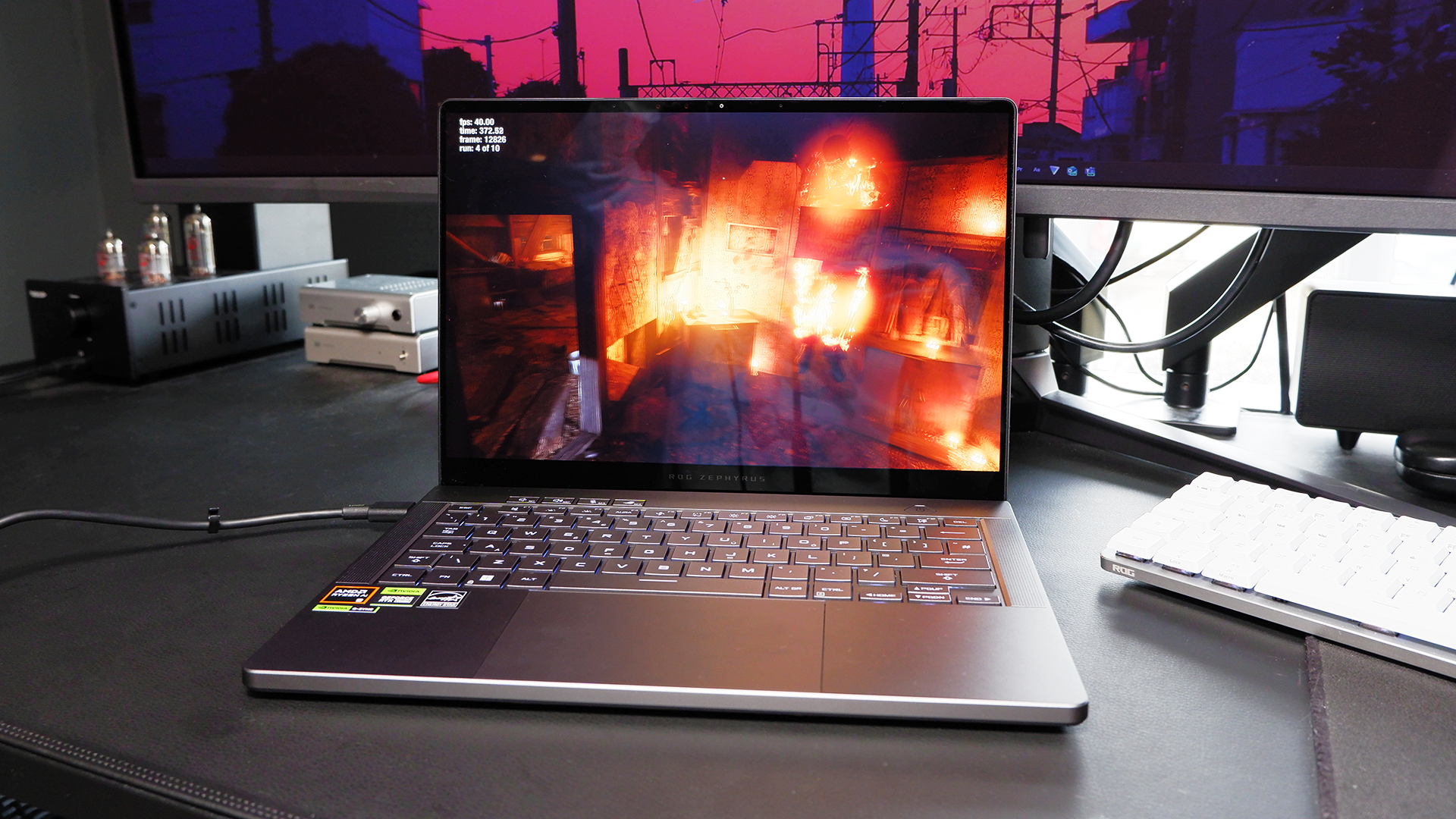
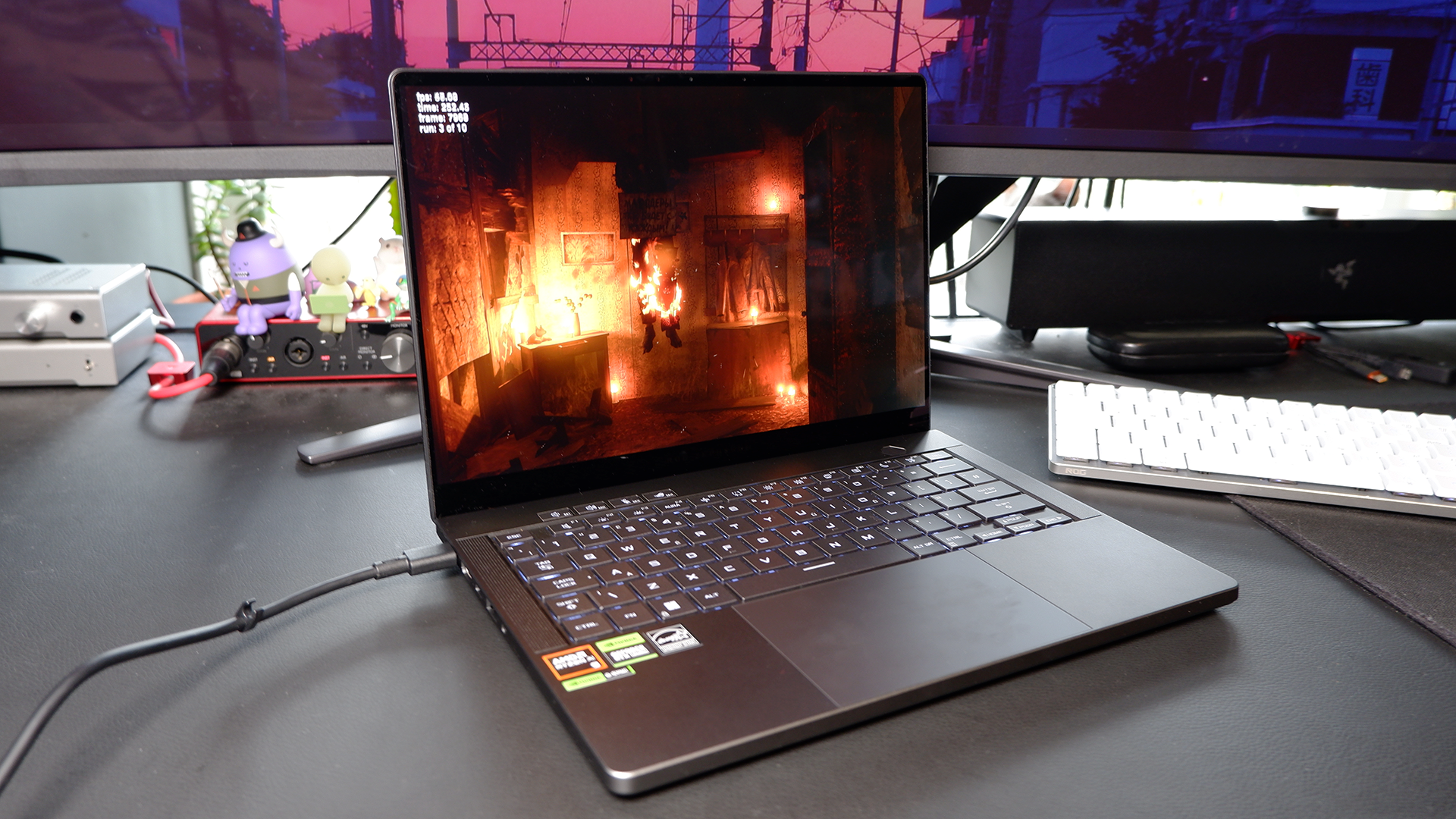
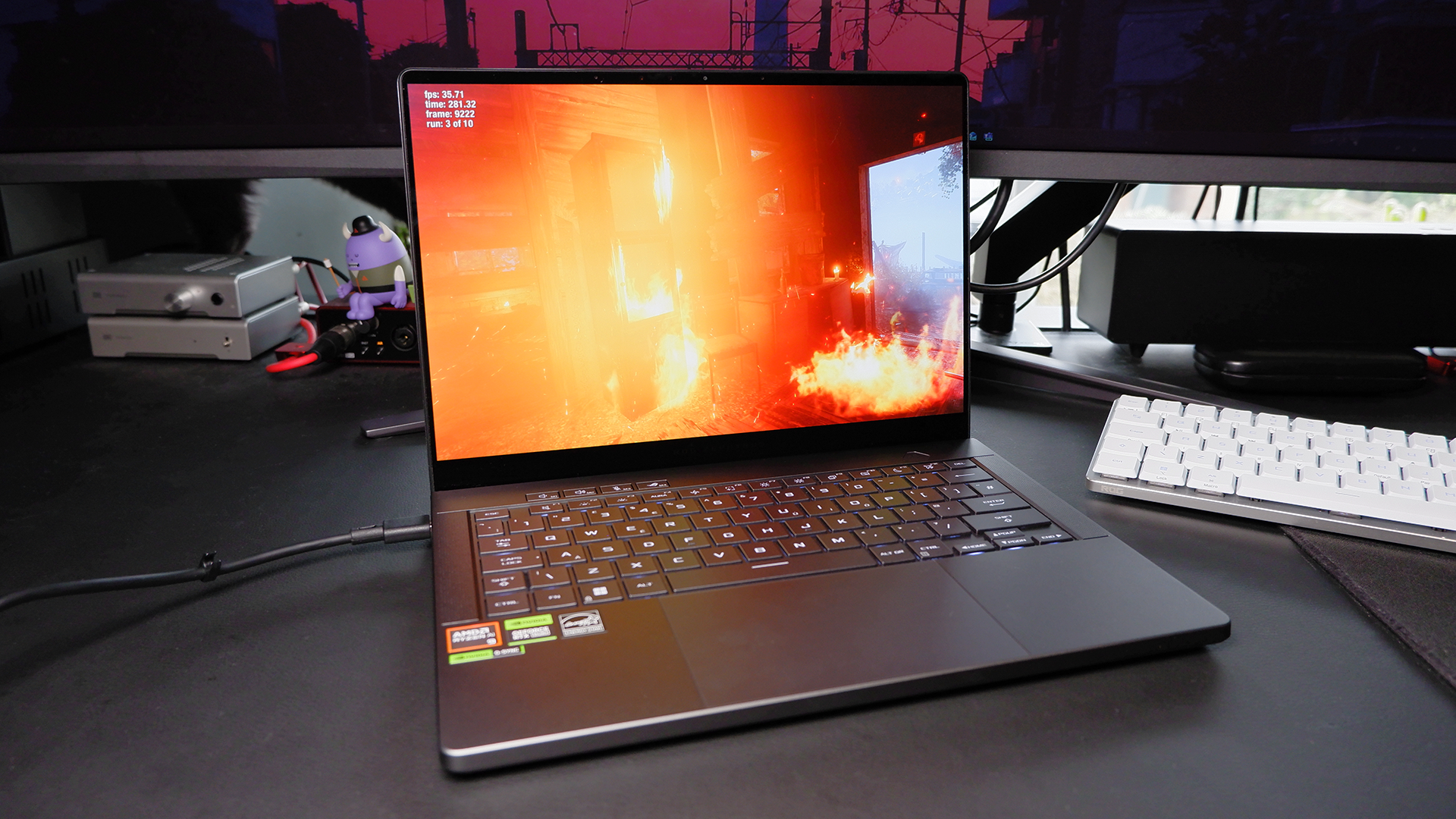
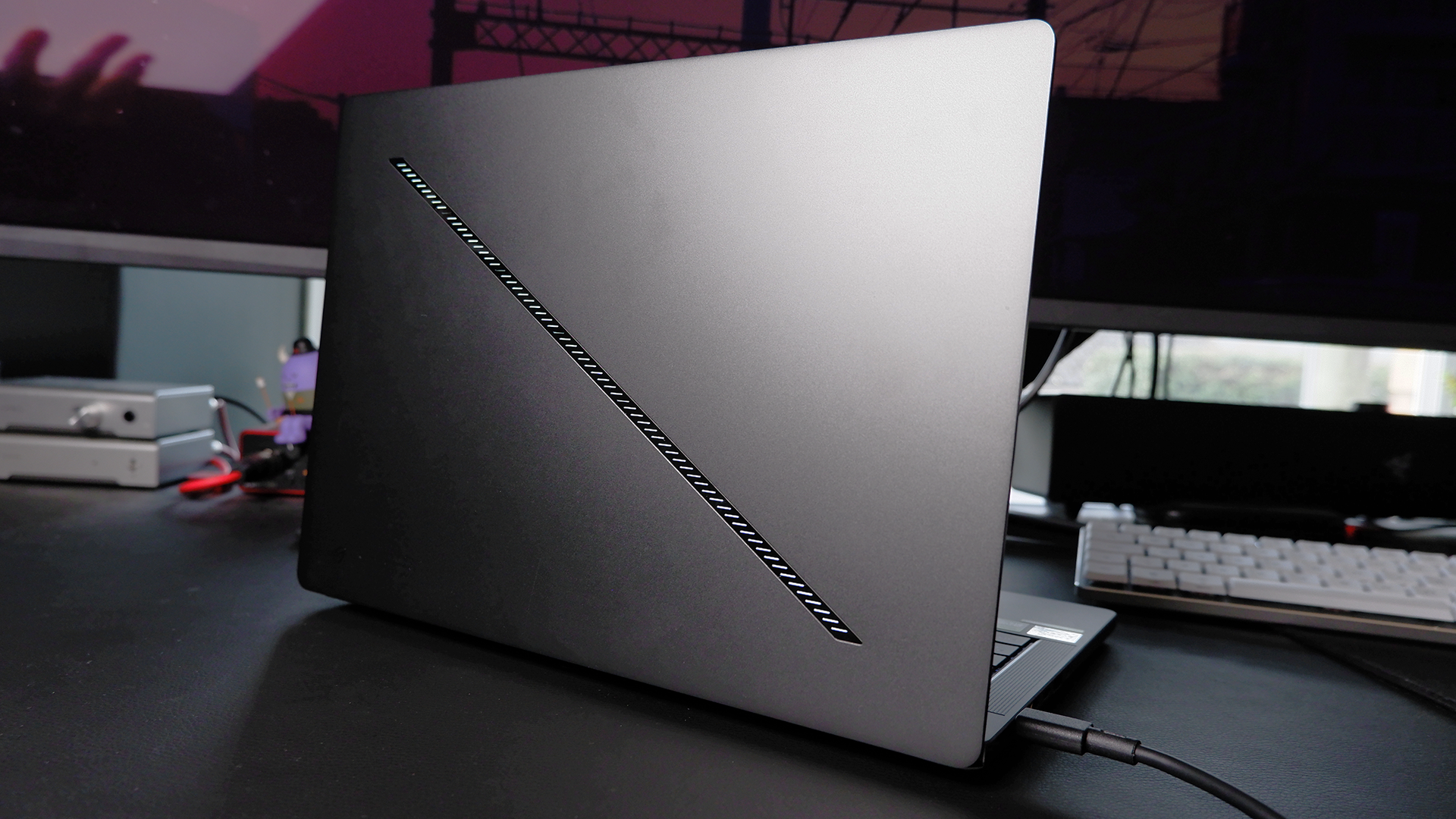
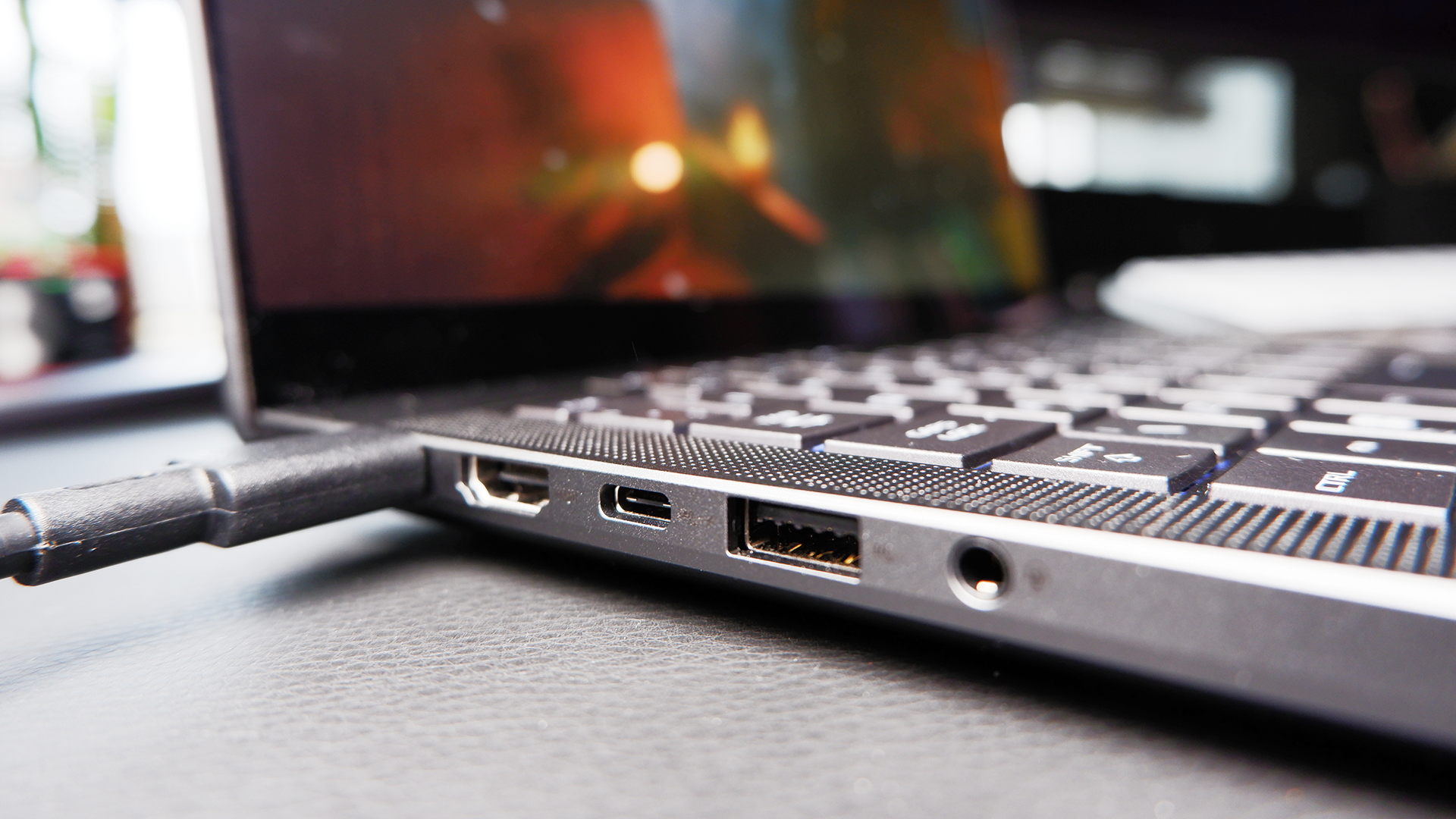
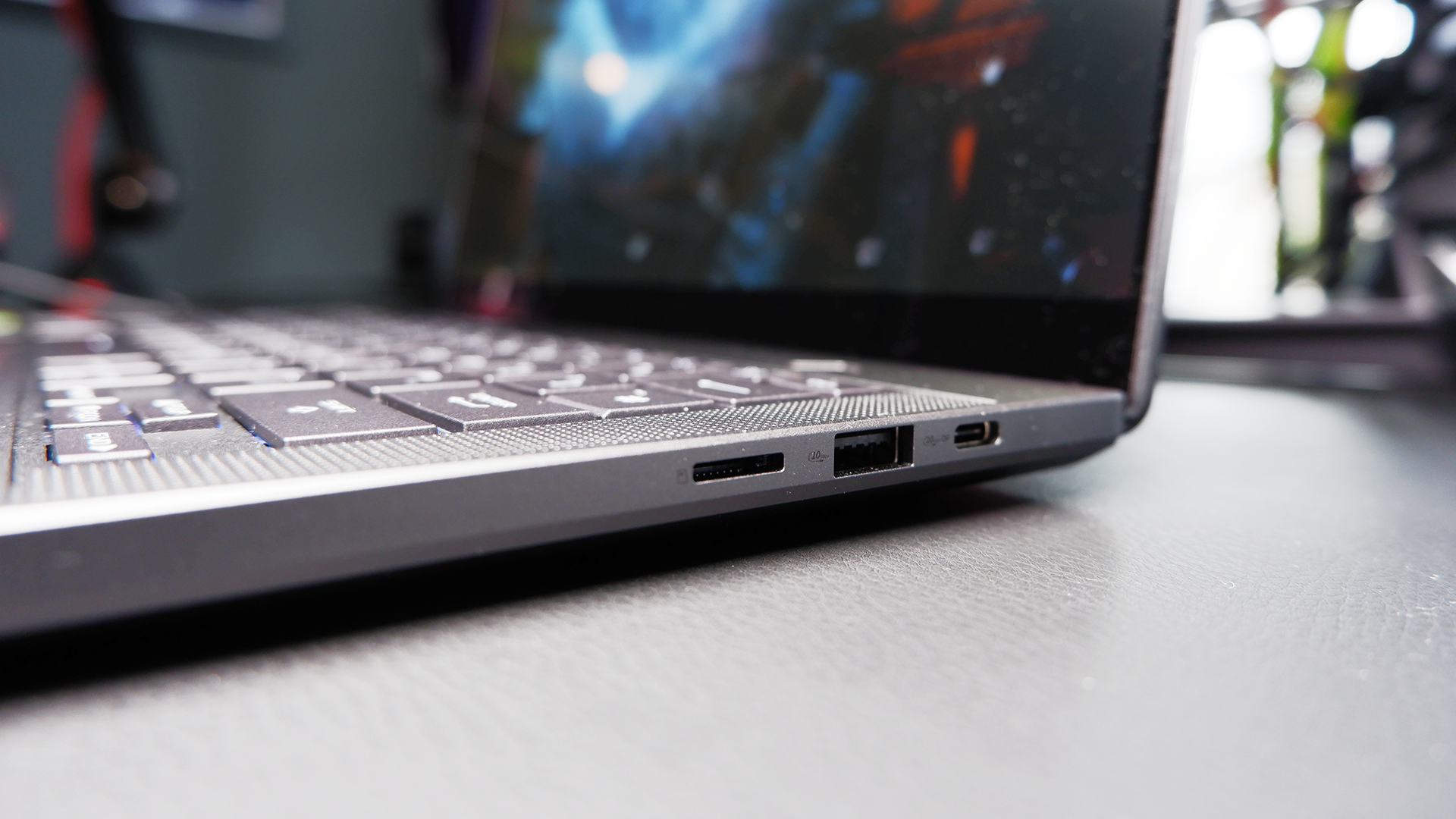
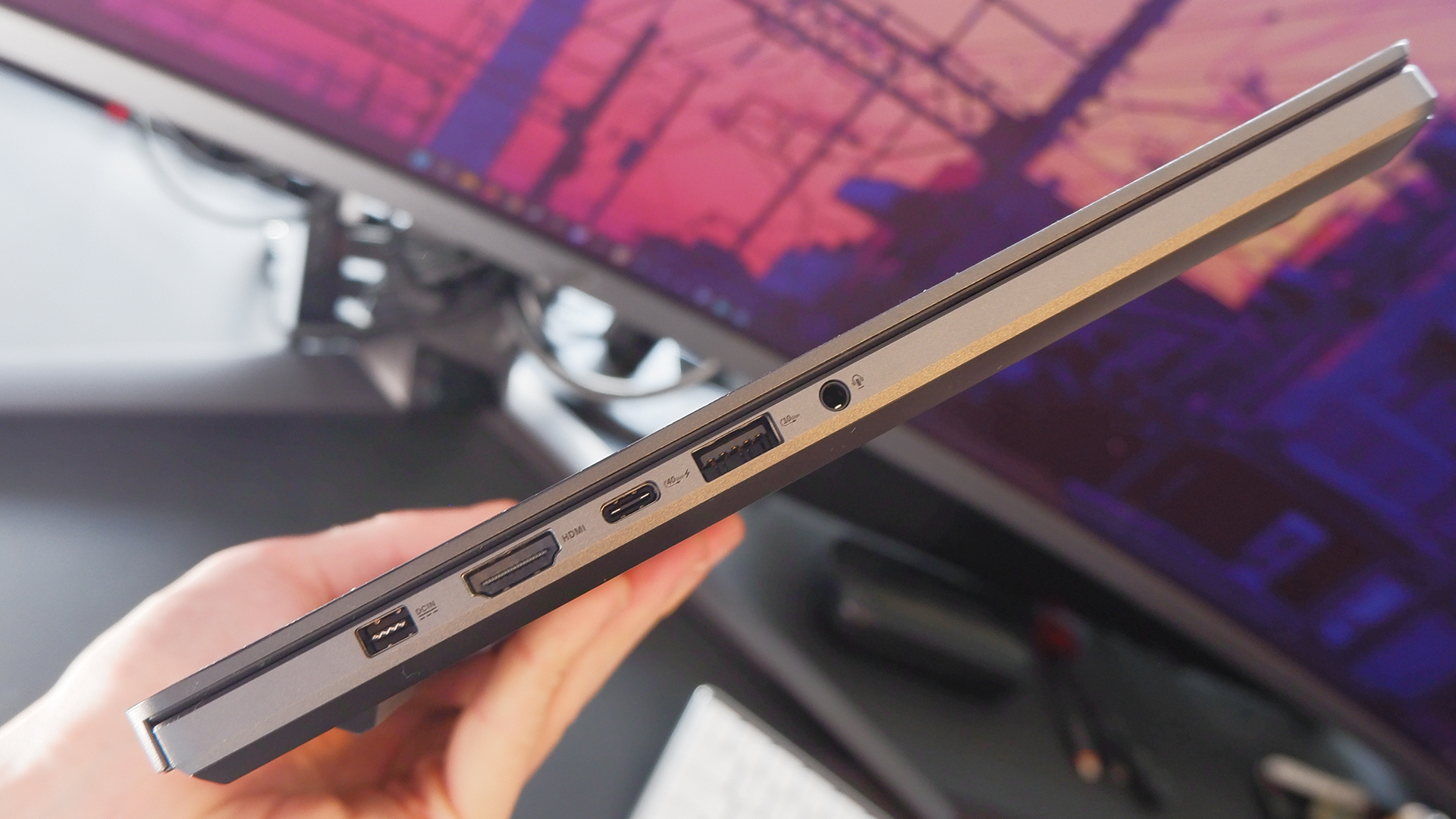
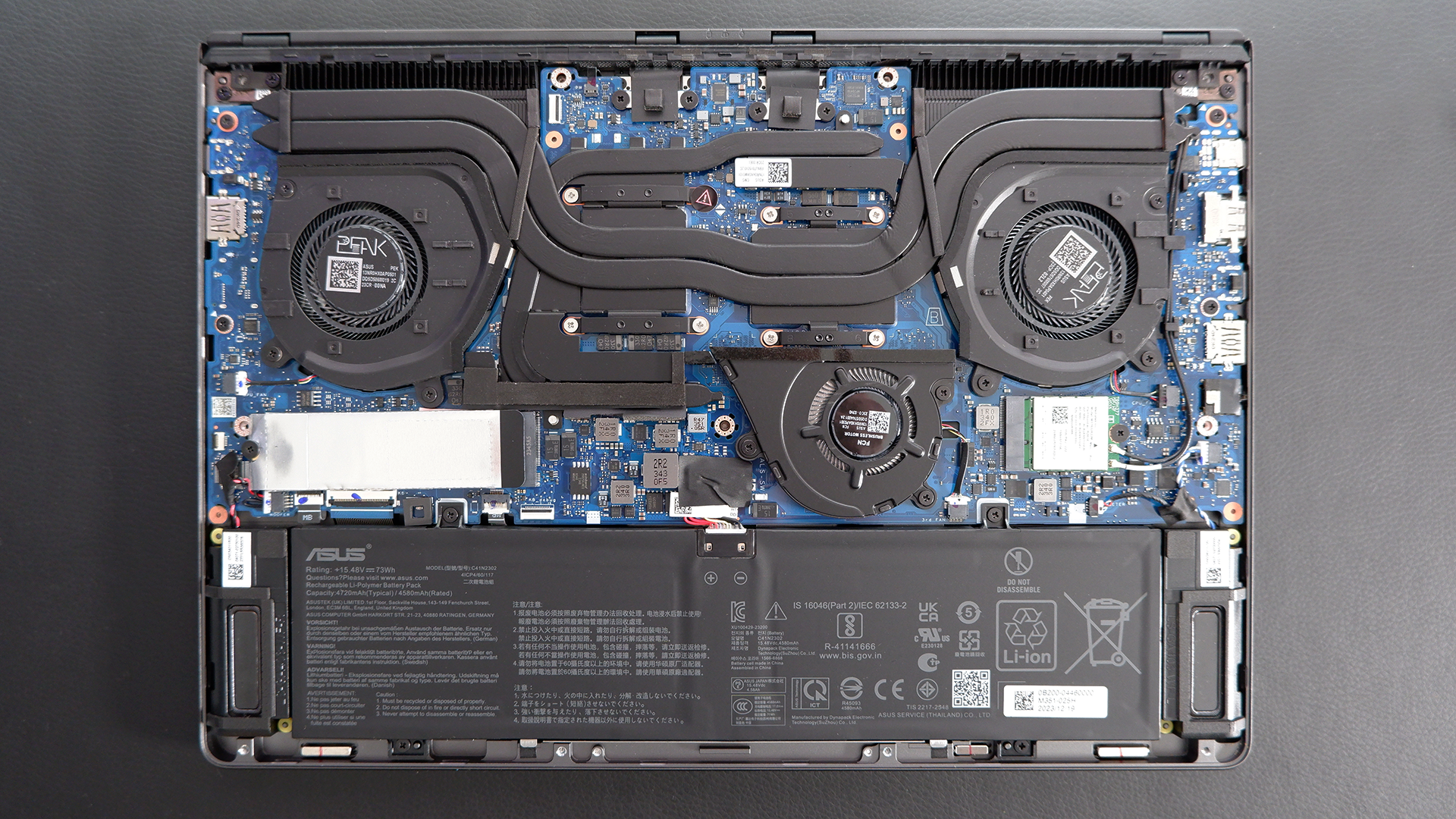
Specifications
Reasons to buy
Reasons to avoid
Our favorite config:
Asus ROG Zephyrus G14 (GA403UI) | AMD Ryzen 9 8945HS | Nvidia GeForce RTX 4070
The model we looked at for review is the best configuration for most PC gamers. The RTX 4070 is a powerful GPU that won't age too quickly and all current models of the 2024 Zephyrus G14 come with the Ryzen 9 chip and 32GB of LPDDR5X. That includes the cheaper models, too, like this RTX 4060-powered G14.
We tested: AMD Ryzen 9 8945HS | Nvidia GeForce RTX 4070 | 32 GB LPDDR5X | 1 TB NVMe SSD
✅ You want a laptop for work and play: The G14 is good-looking enough to carry around to your very important meetings yet still has plenty of performance in-game.
✅ You want an OLED screen: It's all the rage nowadays, but the G14's OLED panel makes everything pop on-screen. It makes taking pictures of the screen easier, too. Games naturally look amazing.
❌ You would like the option to upgrade: The G14 sacrifices an upgrade path for its plucky new shell. That means soldered memory and just a single SSD NVMe slot. Darn.
🪛 Asus' Zephyrus G14 is deservedly one of the best gaming laptops around today. The newer 2024 model comes with many improvements over the previous one, including a lovely all-metal chassis and OLED panel. It's quite an upgrade on an already impressive machine.
The Asus ROG Zephyrus G14 (2024) is the best 14-inch gaming laptop, taking the spot from the Asus ROG Zephyrus G14 (2023). That might make it seem like the newer model was a shoo-in for the top position in this guide, but actually, there have been some serious design changes and improvements made to the newer model. Those which make it entirely deserving of a top spot all on its own.
The G14 2024 comes with a new all-metal chassis that is quite simply lovely. It's the chassis that has finally convinced a few of us in-office to look beyond the Razer Blade, which is famed for its all-metal construction. The metal build on the Zephyrus feels great, looks great, and importantly trims down the footprint of the Zephyrus G14 to an even more travel-friendly size. It's just 1.63 cm at its thickest point.
Now before we get to the other good bits, it's worth saying that the shrunken form factor has led Asus to sacrifice the single removable SO-DIMM slot found on previous years' G14 models. There's no longer an upgrade path for the memory. That said, 32 GB of LPDD5X is included as standard on all the available models at the time of writing.
That should see most people through for years to come, but I understand some users won't like the lack of options here. Also while you can replace the SSD, there's only one NVMe slot available, which can make transfers a pain, as you'd need to make a complete switch, SSD for SSD.
If you're still with me, let's talk about one of the G14's best features: the OLED screen. If it looks good in the gallery images above, it looks even better in person. Excellent breadth of colour and contrast make for a stunning display for gaming. The increased resolution of 2880 x 1800 and slightly larger aspect ratio at 16:10 help to prevent that compact screen from feeling too closed-in.
A surprising plus point on the G14 is its speakers, which have seen significant improvement year-on-year. There are now four tweeters and two woofers built into the G14, split on either side of the keyboard, and they sound genuinely good. Our Andy was also impressed with the Zephyrus G16's speakers, which have similarly been zhushed up with the latest laptop.
For a compact 14-inch gaming laptop, which remains one of the more desirable form factors around, there's no beating the Asus ROG Zephyrus G14 2024.
Read our full Asus ROG Zephyrus G14 (2024) review.
The best 17-inch gaming laptop
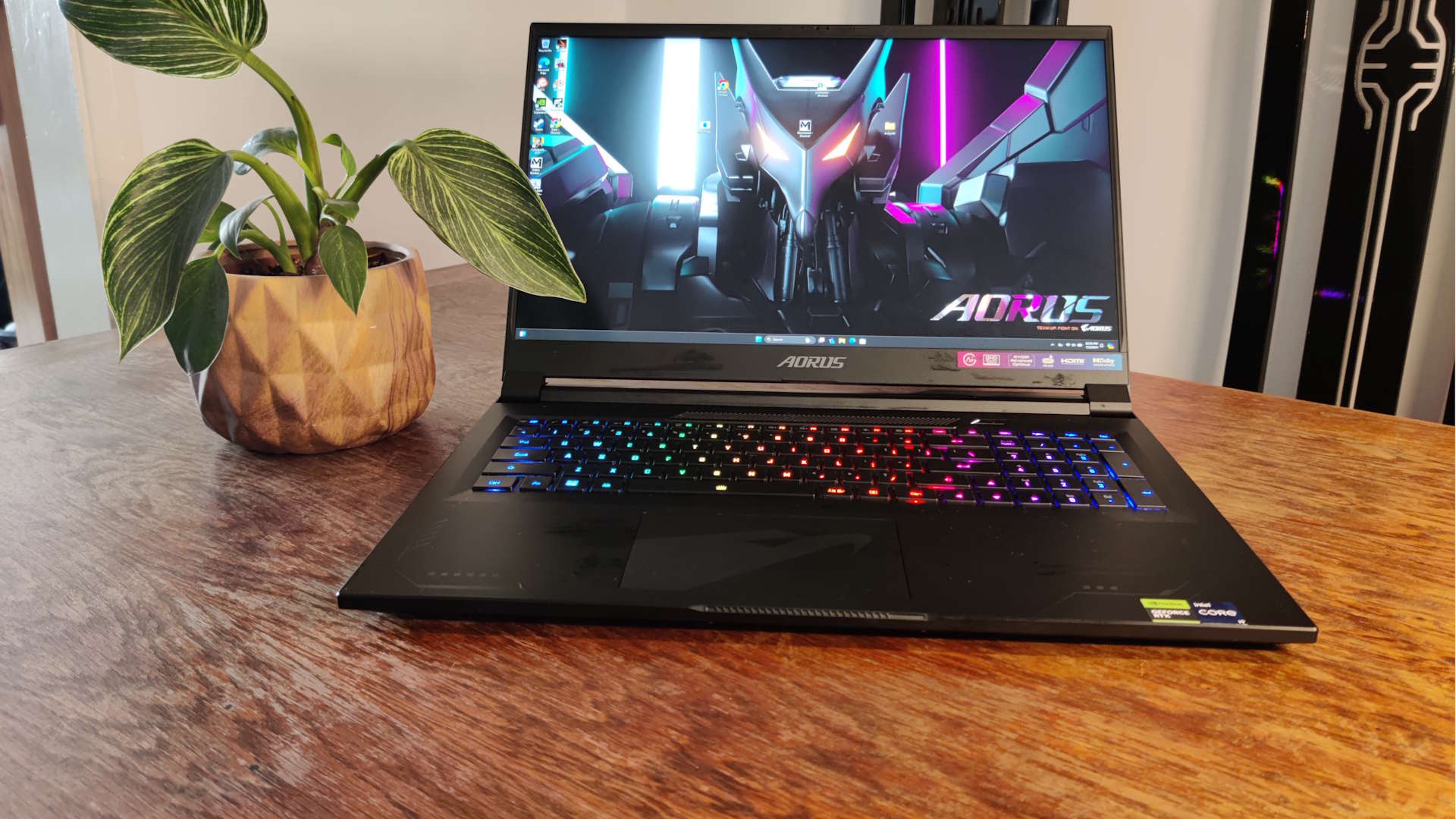
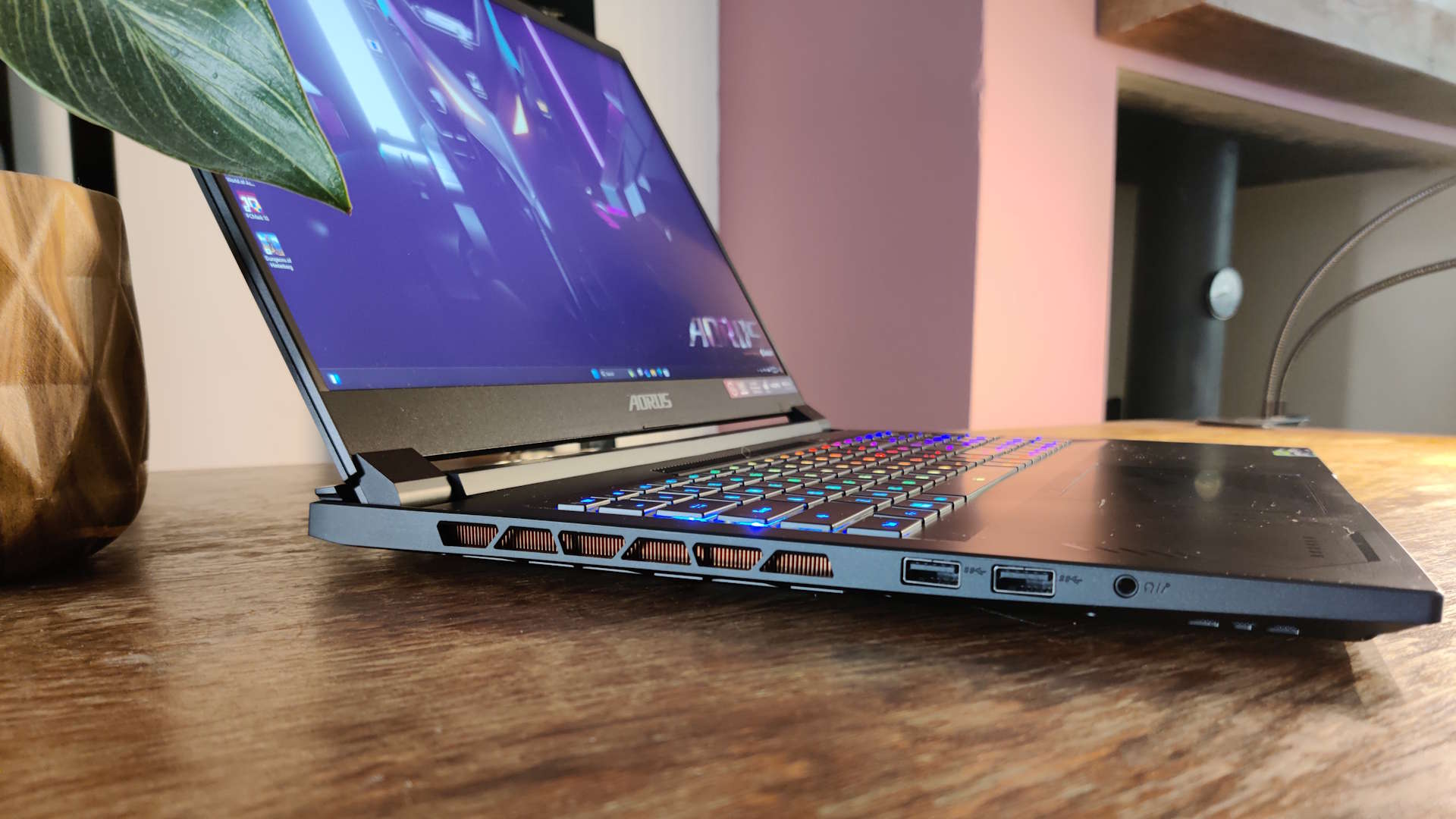
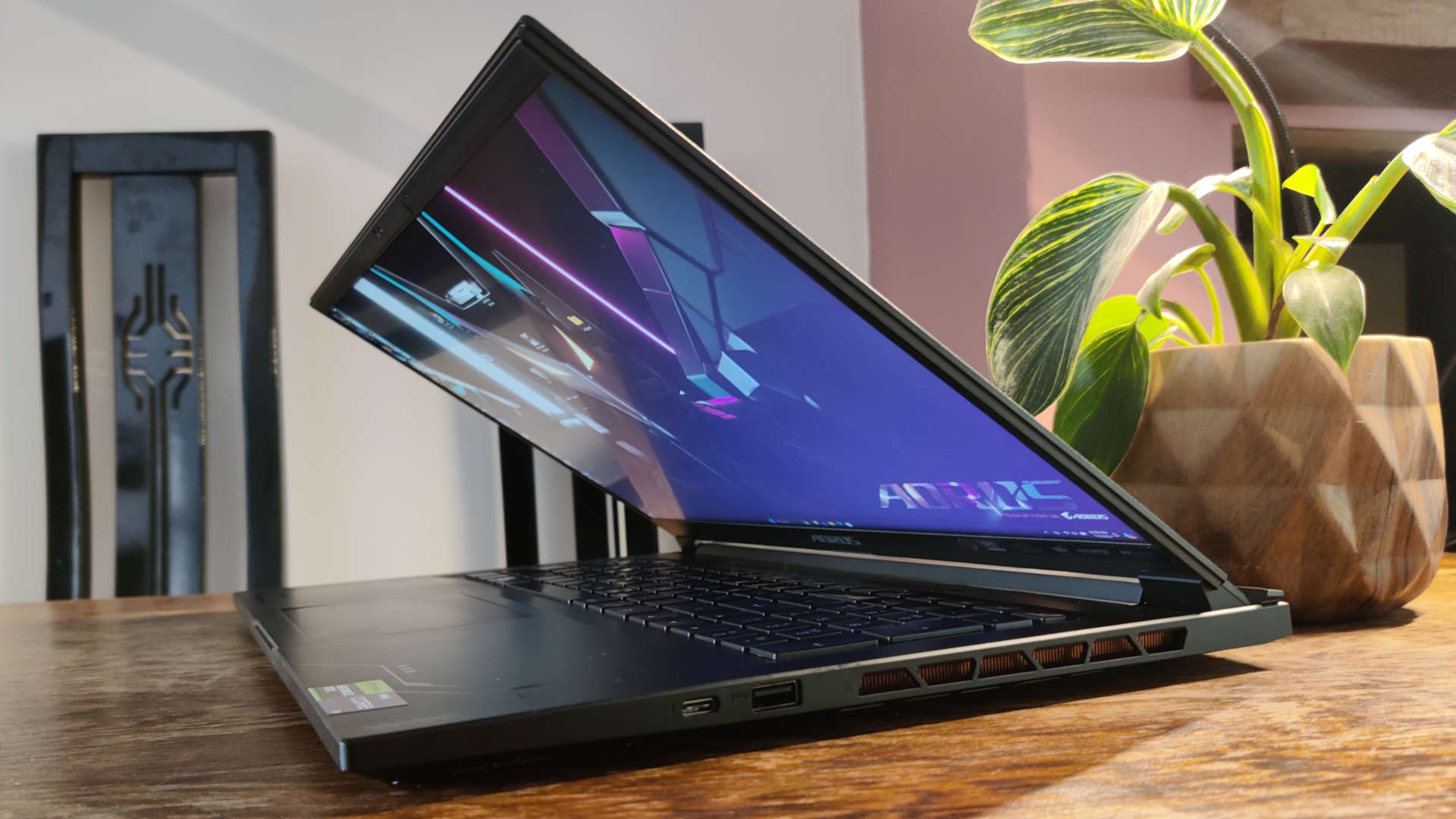
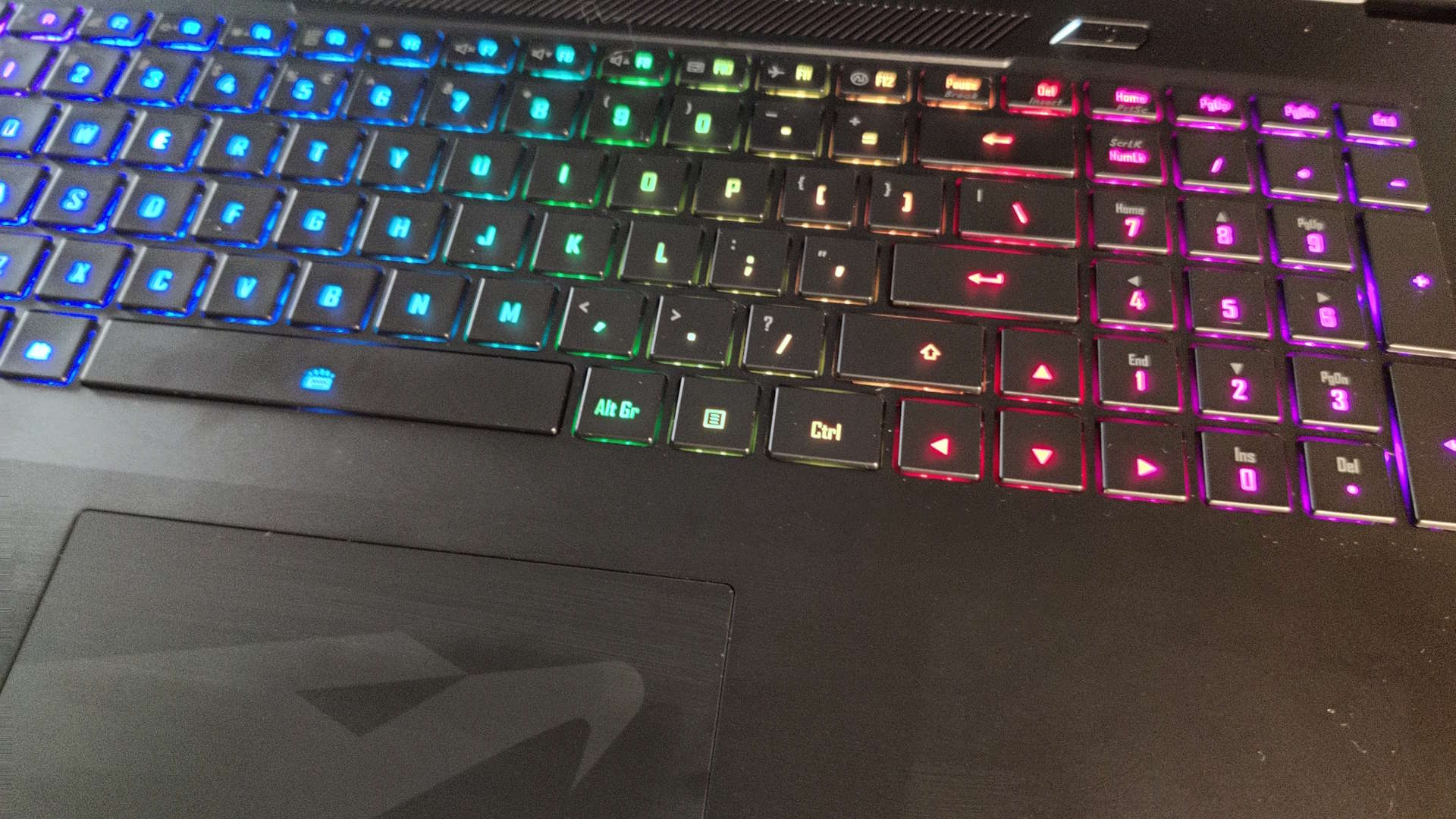
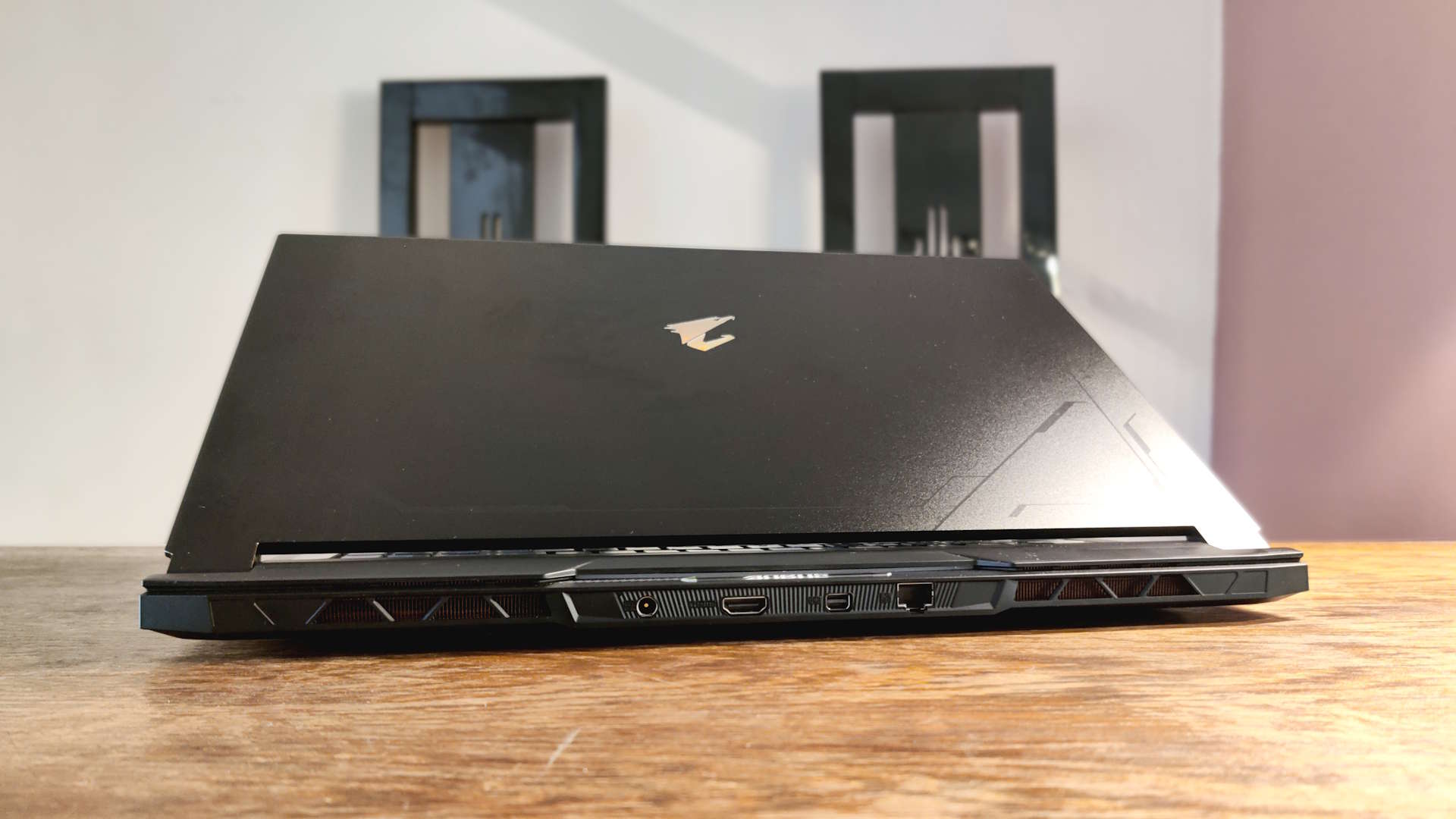
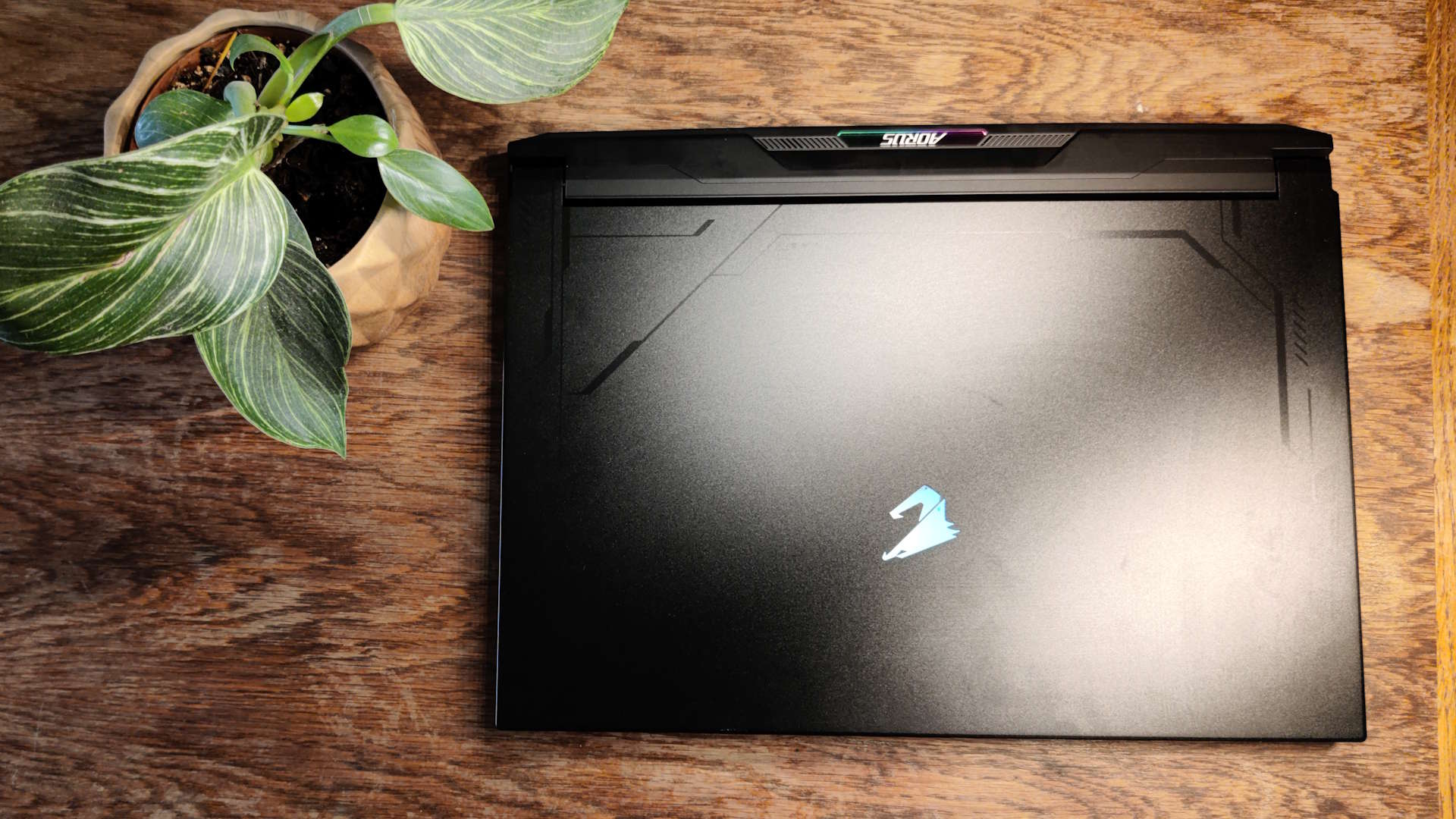
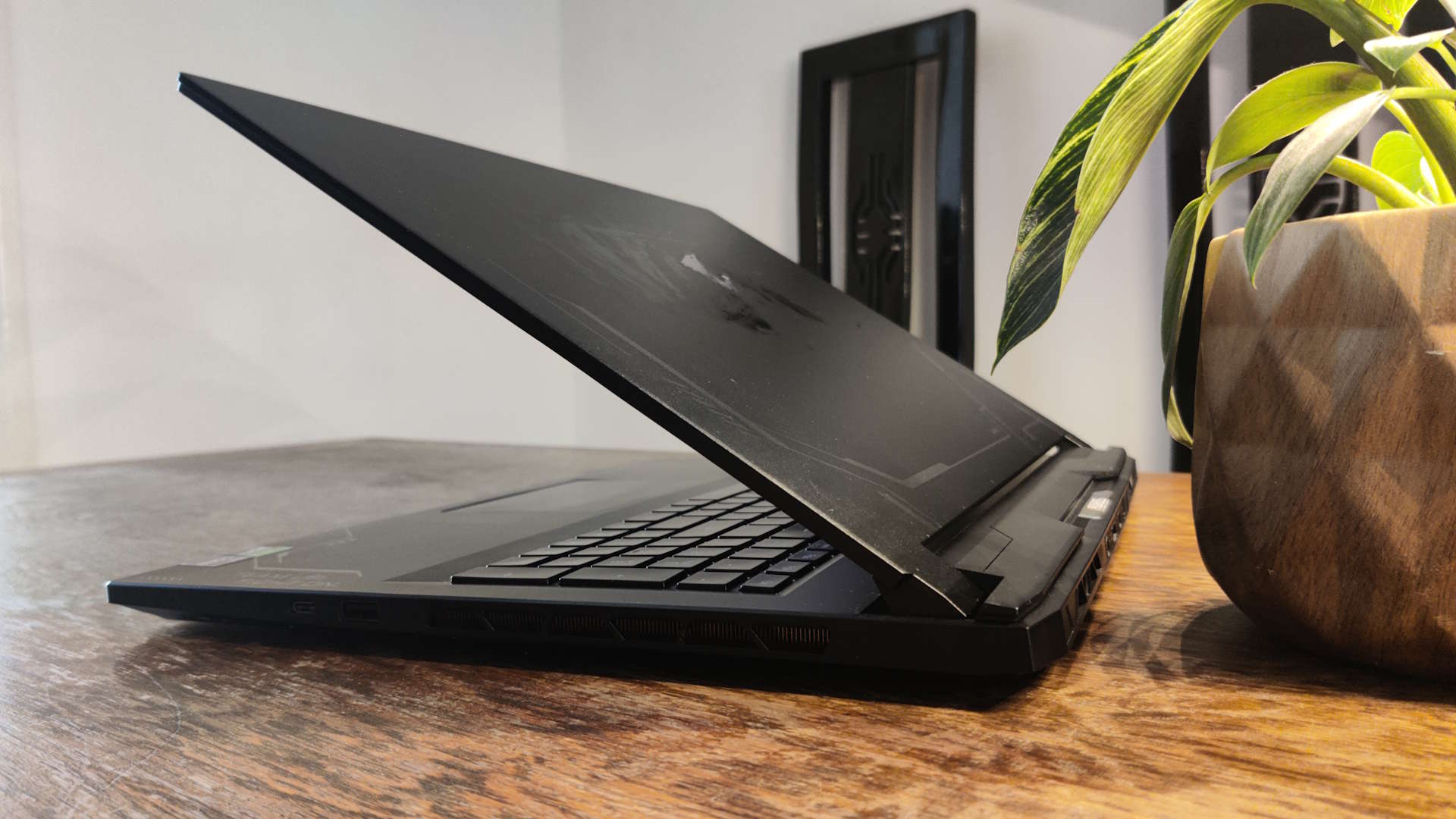
Specifications
Reasons to buy
Reasons to avoid
We tested: Intel Core i9 14900HX | Nvidia RTX 4090 | 32 GB DDR5-4800 | 2x 1 TB SSD
✅ You actually want to game unplugged: This is a gaming laptop that I can actually call portable since you can use it unplugged for a good hour and 20 minutes. That's far longer than most gaming laptops we've tested recently.
✅ You want a big-screen lappy: That's what the 17-inch form factor is all about, and this Gigabyte delivers the big screen with the components inside to drive it.
❌ You need crisp 4K visuals: Gamers who are also movie buffs or do high-fidelity design work on the go, might consider the Lenovo Legion 9i instead as it comes with a much more impressive panel.
❌ You need a lot of USB Type-C ports: The Aorus 17X only comes with a single one, and for those with no dock to split that 100 watts for charging several peripherals, you might want to consider something with more ports.
🪛 The Gigabyte Aorus 17X is a powerful, effective big-screen beauty that absolutely delivers on the specs at its heart. For serious content creators maybe the lack of a 4K panel might be an issue, but if you're looking for a desktop replacement for gaming, this latest Aorus laptop is a great option.
The Gigabyte Aorus 17X is the best 17-inch gaming laptop we've tested in recent times. Not because it's the outright fastest—the Strix Scar 17 X3D still holds that title—but because it's the one we'd actually want to own ourselves. There's a big difference between a super-powerful gaming laptop that is all about the power, and one that is able to get the balance just right.
And Gigabyte has been paying attention to that in recent times and is actually delivering a new version of its Aorus 17X that has been created with the end user in mind, and not just as the person who has to sit and listen to a turbine whine of fans while the damn thing sounds like it's going to take off.
This is still one of the problems with gaming laptops, and specifically an issue with Asus' Strix Scar 17 X3D which held this position in our guide for so long. It's a very, very powerful machine, capable of posting the most outstanding gaming performance—thanks to that mix of 3D V-cache on the Zen 4 processors and the RTX 4090 GPU—but you are going to need some equally very, very good noise cancelling headphones.
That's not necessarily been an issue during our testing of the Aorus 17X and, as Katie says in our review: "I'd take the Aorus' quiet wins over the Strix Scar's unnecessarily power-hungry performance."
The other issue with the 3D V-cache version of the Strix Scar 17 is that it's not easy to find, and less so at a decent price. Again, this is where the Aorus 17X has it beat, the price, especially of the almost-as-powerful RTX 4080 version is so much cheaper and you're not going to really feel the miss of a few fps here and there once you're running at 1440p.
You might look at those 1080p numbers below and worry about the delta between the Strix and the Aorus, but that delta gets a lot smaller when you boost the resolution up to the screen's 2560 x 1440 native, and then it becomes far less of a concern. Especially when you can actually hear yourself think at the same time.
Though that screen is one of the things that might have you considering something higher up the laptop food chain, potentially even looking up a hulking Razer Blade 18. However, you will have to spend the mega-bucks if you do want a good 4K panel inside your big-screen laptop. This 1440p 240 Hz display is good, though not as stellar as the Nebula displays of the smaller Asus ROG machines or the stunning OLED the Blade 16 sports.
There is also a lack of USB Type-C connectors to consider, too. If you're picking this for content creation, and the multiple Type-A ports aren't doing it for you, then a good Type-C hub will be in order. But if you're looking for a well-balanced, big-screen gaming laptop, with a decent battery life and effective cooling, then the Aorus 17X is the one to beat right now.
Read our full Gigabyte Aorus 17X review.
The best gaming laptop screen
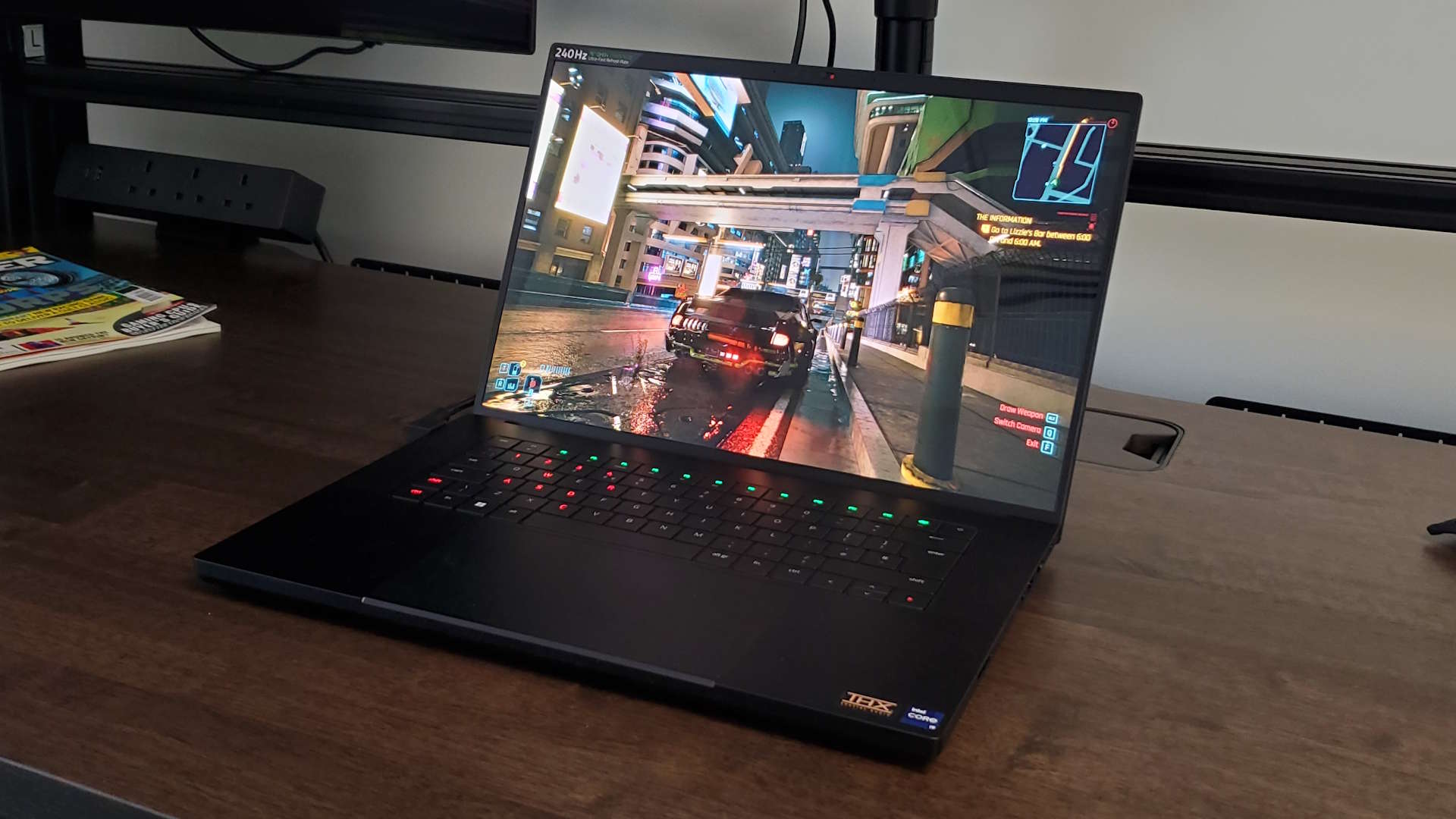
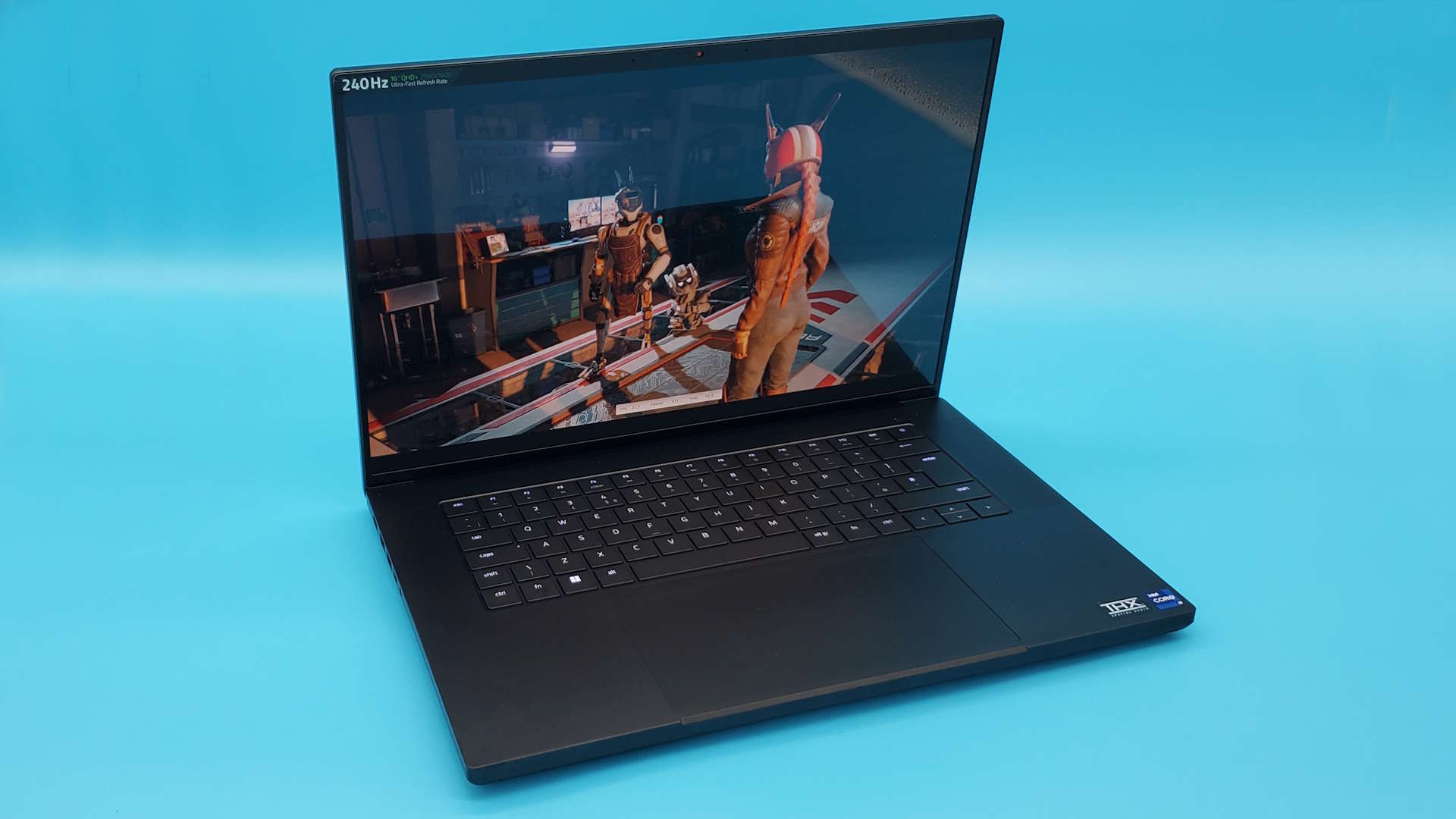
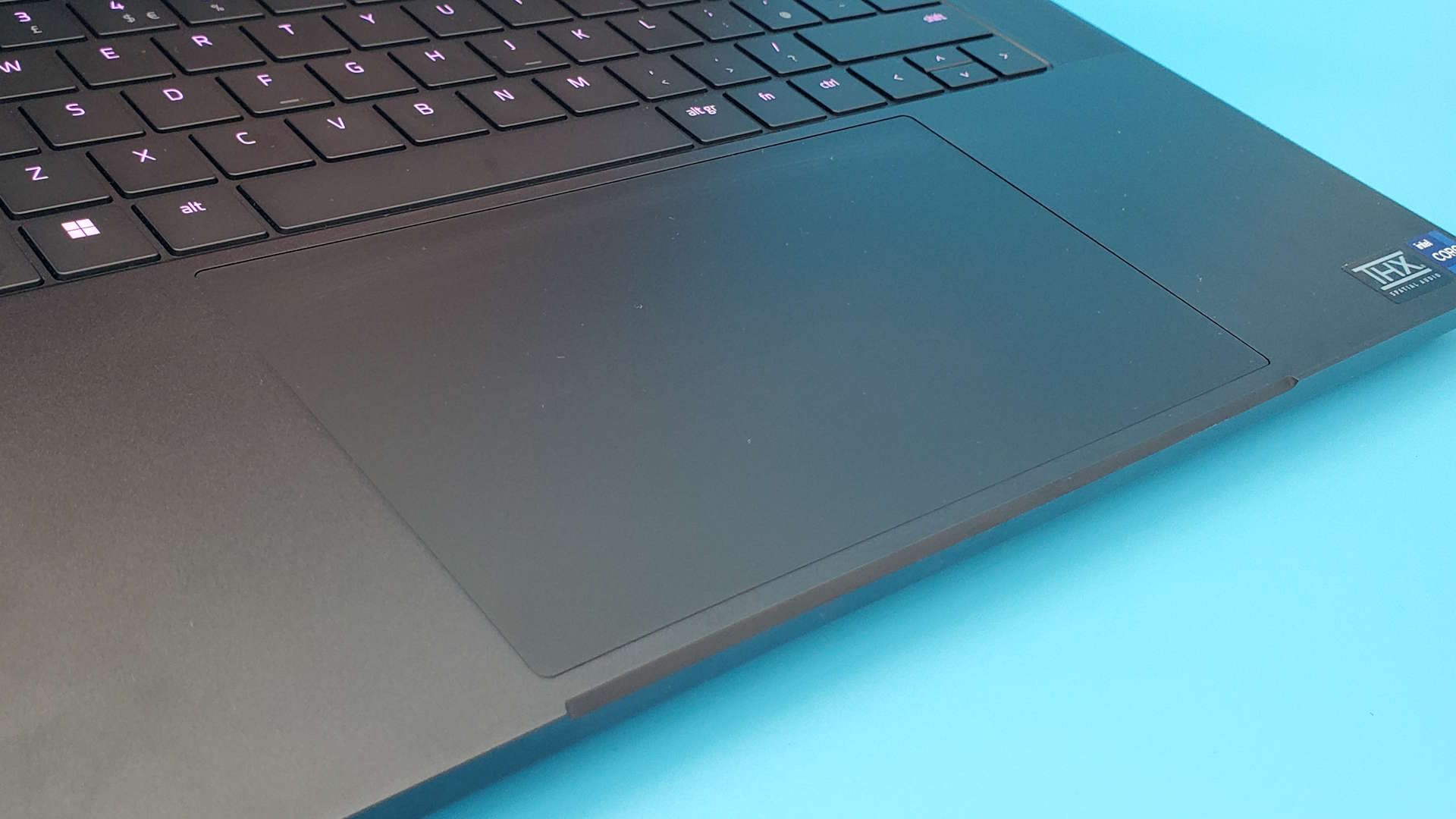
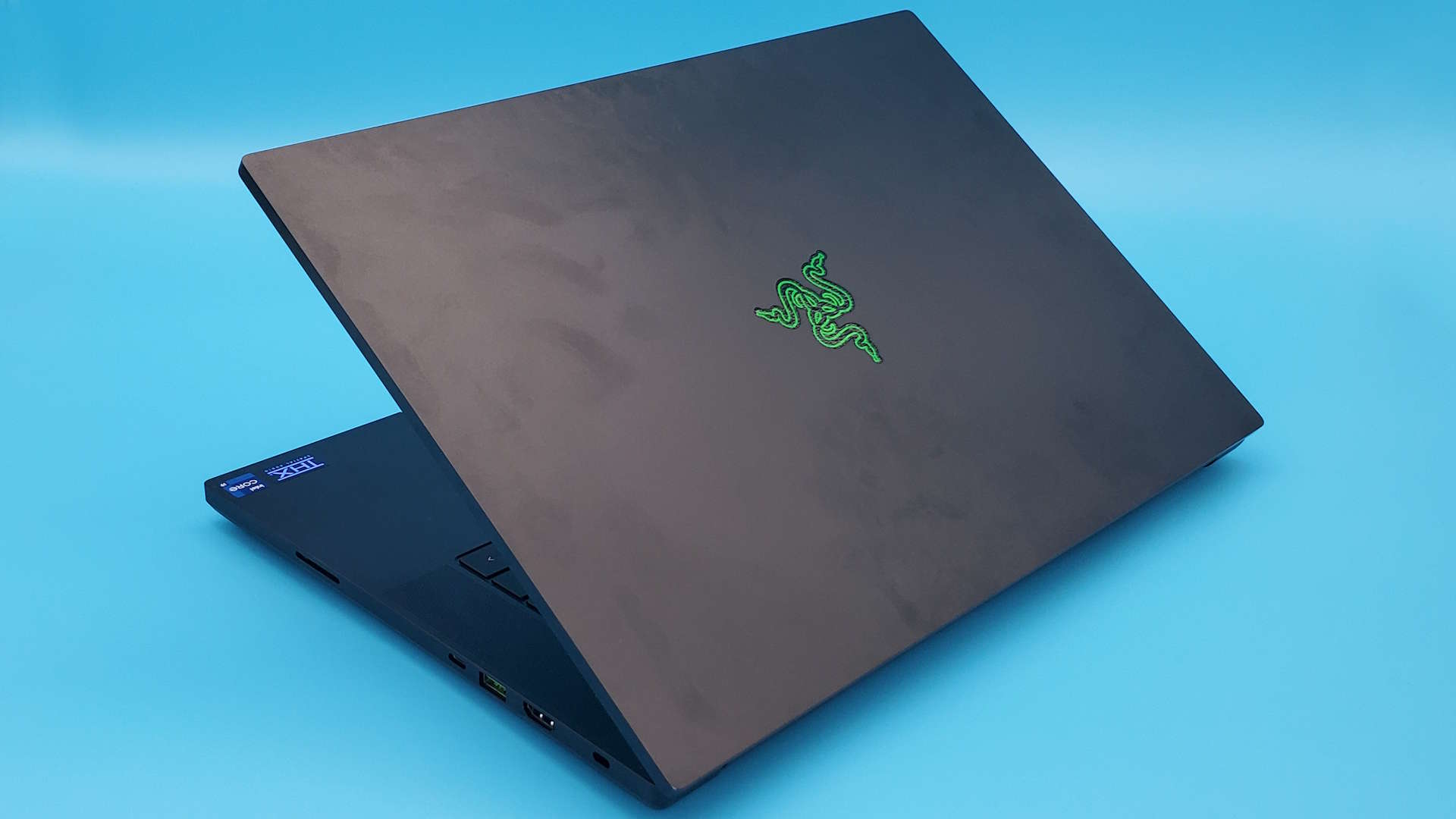
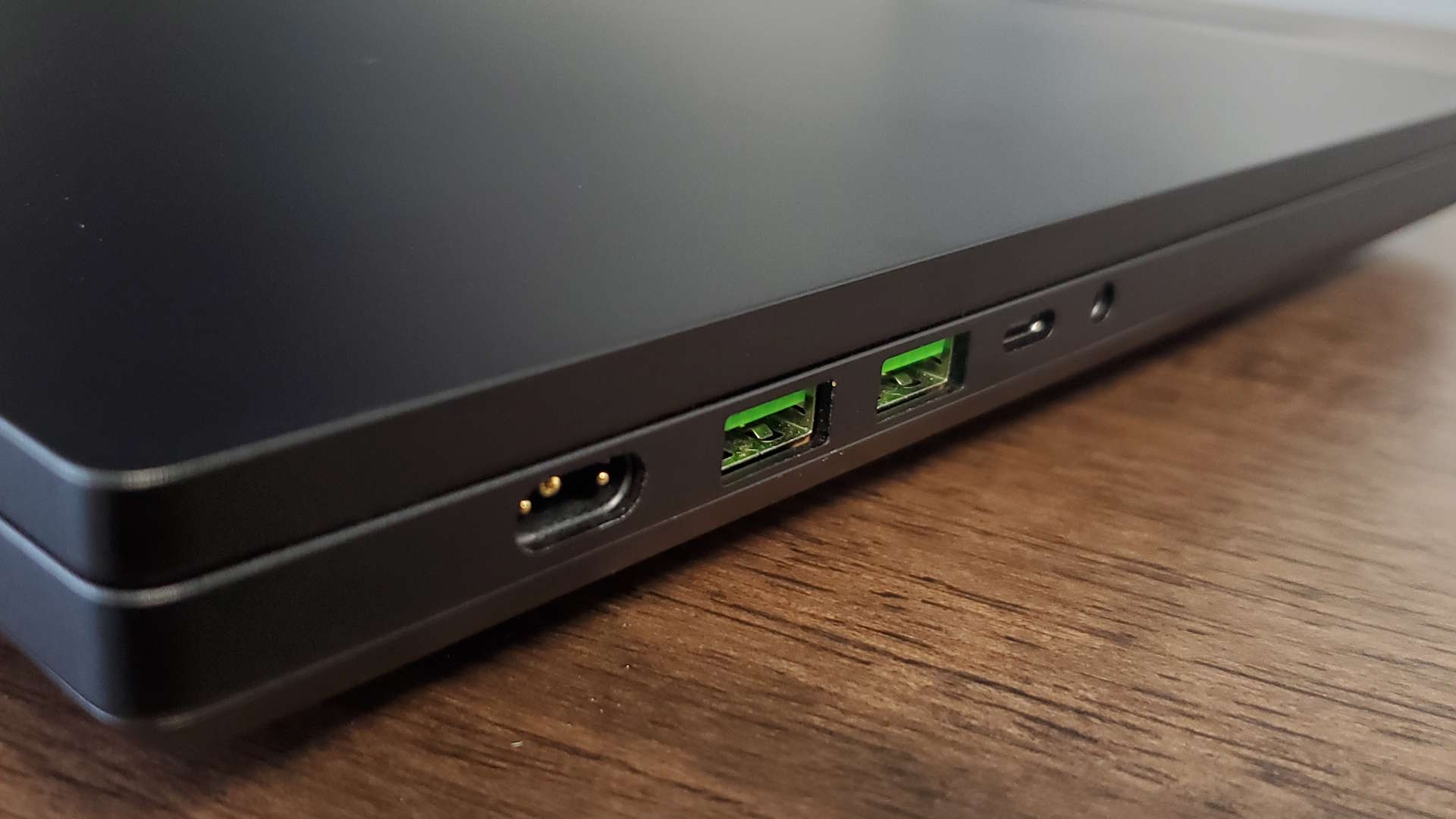
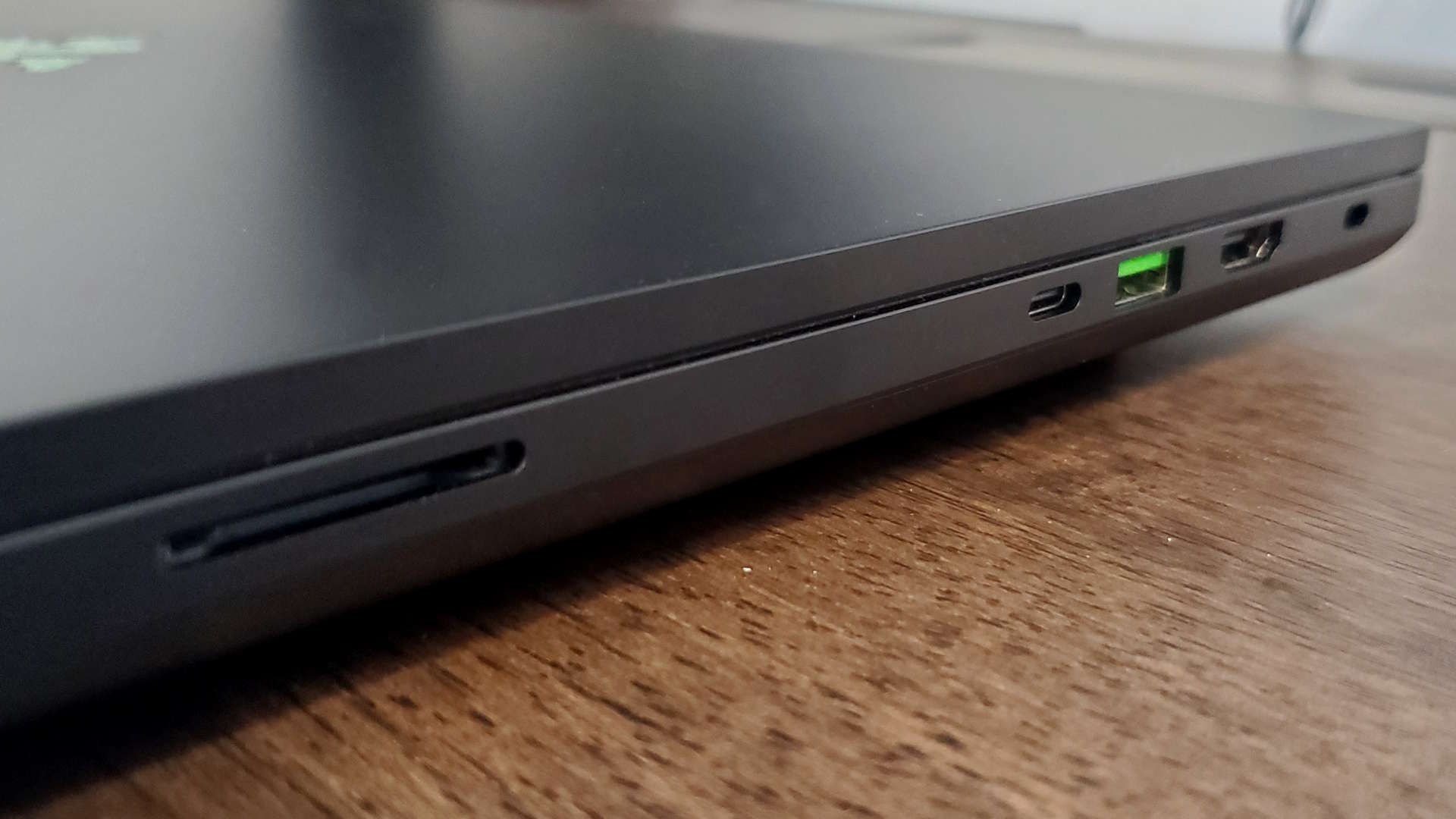
Specifications
Reasons to buy
Reasons to avoid
Our favorite config:
Razer Blade 16 | RTX 4080 | Core i9 14900HX | 32 GB DDR5-5600 | 1 TB SSD | OLED
If you're going to hand over a large sum of money for a gaming laptop, you'll be demanding exceptional performance, a stunning display, and incredible looks. The 2024 version of the Razer Blade 16 has all these things but AU$7,000 for an RTX 4080 will make you pause for thought. Then you'll see that OLED screen and wonder how you're going to pay for it.
We tested: Intel Core i9 14900HX | Nvidia RTX 4080 | 32 GB DDR5-5600 | 1 TB NVMe SSD
✅ You want the best laptop screen in the business: The 240 Hz 1600p OLED Razer jammed into this laptop has to be seen to be believed. It's a stunner in games and in any HDR video you want to throw at it.
✅ You want a trackpad you can really love: The vast real estate of the Razer trackpad is something to behold. And it's super responsive, too.
❌ You have to ask how much it costs: There is no reasonable value judgement here, just a laptop with a premium price tag that struggles to make sense against the far cheaper, as performant, competition.
❌ You want a svelte machine: The Blade 15 was a skinny one, but the Blade 16 has definitely put on weight in comparison, making it a rather hefty machine.
🪛 There's no denying that this laptop is too expensive for the hardware inside but Razer's machines often are and the OLED screen in this one has to be seen to be believed. If money is no object and you simply must have the greatest visual experience in a laptop, then only the Razer Blade 16 will do.
It's not hard to see why the gaming laptop with the best screen is the Razer Blade 16 (2024). Before you even open it up, you know that there's something special about it just by the fact that Razer only offers one of two CPUs: an Intel Core i9 13950HX or 14900HX. And then there's the fact that the RRP for the model we tested, with an RTX 4080 GPU, is an astonishing AU$7,299.
Razer's laptops could never be described as being cheap and their solid build quality goes no small way to justifying the price tag. But in this particular instance, it's all about the display. It's 16 inches, obviously, with a 2560 x 1600 resolution and 240 Hz variable refresh rate. It also just so happens to be one of the best OLED panels we've ever seen.
Mere words are not good enough to describe how good it is. Less overt and in-your-face than a mini-LED, richer and more natural than a top-end IPS panel, Razer's choice of display is inspired. Games that offer an HDR mode, such as Cyberpunk 2077, will look so good that you'll probably never want to use another screen again.
The rest of the hardware is, fortunately, up to scratch—with the Core i9 14900HX and RTX 4080 in our review sample blasting through our usual benchmarks with ease. That said, we've tested some RTX 4080 laptops that are just as fast and quite a lot cheaper.
Razer hasn't just spent all the extra money on the OLED screen and nice chassis, though. The huge trackpad is responsive and easy to use and gives the whole machine an air of quality. The distinct heft of the Blade 16 also lends a helping hand in this area, though it does make it somewhat less portable than we'd like.
Not that you'd want to travel around much with something so expensive. It isn't because the Razer is fragile—far from it, especially the hinges—but you'll barely get a chance to use it, from having to push people away from staring at that stunning OLED display.
If you really must have the very best screen in your gaming laptop and money is no object whatsoever, then there's just one choice: Razer's Blade 16. Just don't expect it to play games any faster than other laptops with the same price tag.
Read our full Razer Blade 16 (2024) review.
How we test gaming laptops
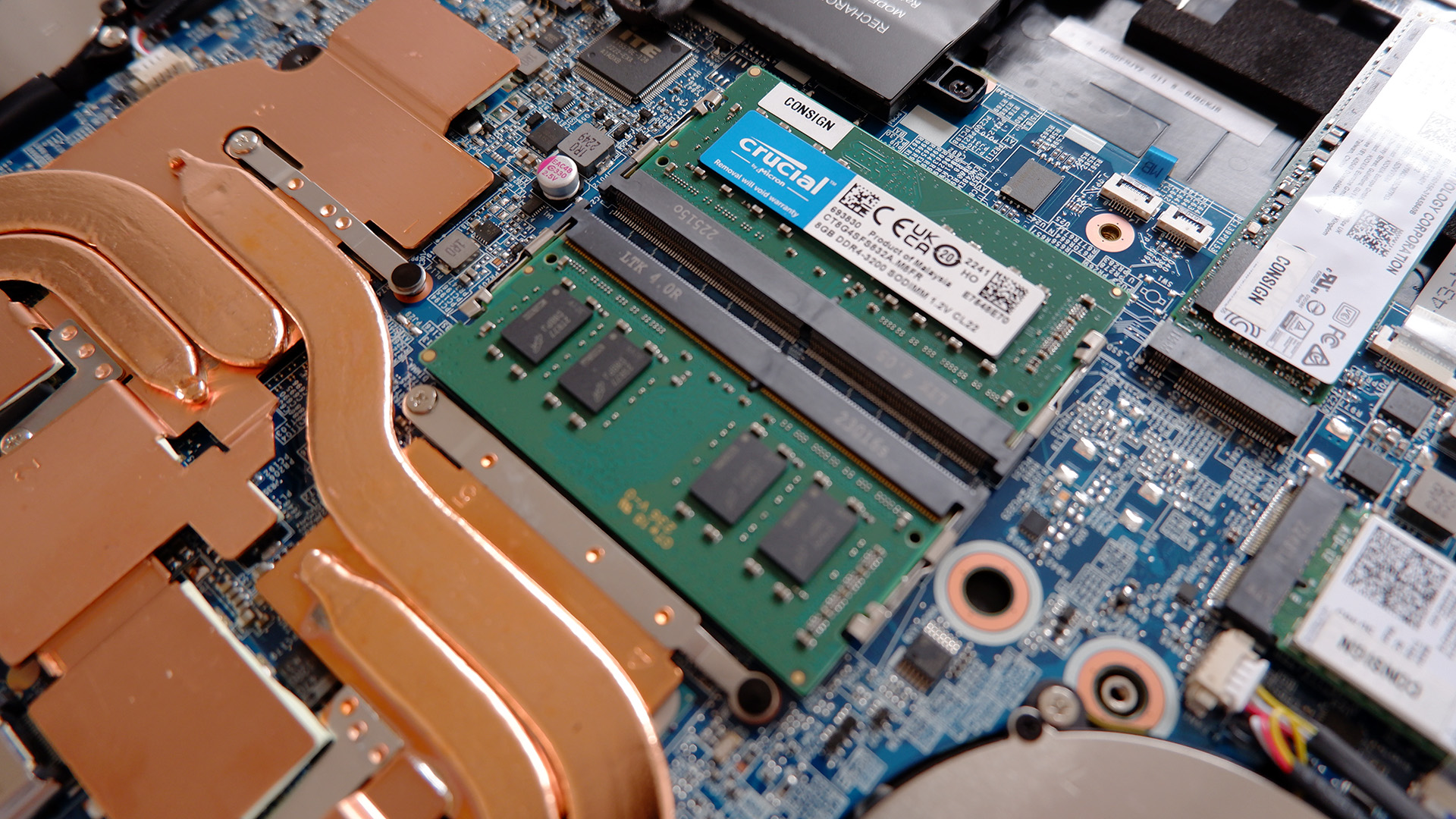
We dedicate a lot of time to our gaming laptop testing to ensure that we're capturing all the objective performance data we need and that we have the opportunity to catalogue the subjective experience of actually using a given device. Gaming laptops are expensive items, and you're right to do your research before buying, so we're passionate about making sure we're able to tell you what a notebook is like to use as well as how powerful it is.
The objective side demands that we put each system through our standard benchmarking suite. That allows us to confidently compare systems on a directly referential basis. We test the raw performance of the CPU, GPU, and storage components of a system using the Cinebench R23 and Blender 3.3.0 benchmarks to get a bead on the processor and graphics card rendering performance. We also use X264 to test the encoding power of a laptop CPU.
3DMark's Storage test and the Final Fantasy XIV Endwalker benchmarks are a great way to highlight the gaming performance of a laptop's storage subsystem. And 3DMark also gives us a way to get a synthetic read on both the gaming and ray tracing performance of a GPU.
We also put a system through gaming performance tests of Cyberpunk 2077, F1 22, Hitman 3, Horizon Zero Dawn, and Metro Exodus Enhanced, at both 1080p—so we have a base reference score no matter what a system's native resolution is—and at 1440p and 4K where that is available.
We also run some experiential tests on a system's panel—we use Lagom's LCD test images to help discern things like black levels and white saturation as well as general desktop and gaming testing to see how it feels to use a laptop's screen.
It's also important to check the actual gaming frequency of both a laptop's GPU and CPU, to see how a given slice of silicon performs given the thermal constraints of different notebook chassis.
We then use PCMark 10's gaming battery life test to give us a comparative battery life metric.
Personally I also like to always write a review of a given laptop on the machine itself. That gives you a good feel about both the trackpad and keyboard, as well as the ergonomics of the chassis design, too.
We then bring all of that subjective and objective data together alongside the price to decide how well each machine we test stands up against all the other gaming laptops we've looked at in our combined decades of PC hardware testing.
Also tested
The above gaming laptops are the ones we recommend you spend your hard-earned cash on if you're looking for a new machine, but aren't the only ones we've reviewed. We regularly test different gaming laptops to make sure we're recommending only the absolute best.
These are the machines we've looked at recently that didn't make the cut...
Samsung Galaxy Book 4 Ultra | Intel Core Ultra 9 185H | RTX 4070 (80 W) | 32 GB LPDDR5X | 1 TB SSD
With a wonderful screen, solid specs, and great battery life for non-gaming needs, this is a nice laptop but it's quite expensive and that GPU is a bit low.
PC Gamer Score: 70%
Read our full Samsung Galaxy Book4 Ultra review.
MSI Titan 18 HX A14V | Intel Core i9 14900HX | RTX 4090 (175 W) | 128 GB DDR5 | 6 TB SSD (total)
While the components inside are top-notch on paper, in the real world the Titan 18 HX makes very little sense. It's cantankerous, old-fashioned, and somehow brutally overbuilt yet flimsy at the same time. The best of the best? Not even close.
PC Gamer score: 49%
Read our full MSI Titan 18 HX A14V review.
Lenovo Legion Pro 7i | RTX 4080 | Intel Core i9 14900HX | 32GB DDR5-5600 | 2x 1TB SSD
From speedy storage, to masses of RAM, and a superb CPU, there's a lot to love about the Lenovo Legion Pro 7i. It's a real shame that, while it performs superbly (particularly in Thermal Mode), the battery life is pretty awful. Still, it's otherwise a seriously impressive machine.
PC Gamer score: 88%
Read our full Lenovo Legion Pro 7i Gen9 review.
Asus ProArt PX13 | AMD Ryzen AI 9 HX 370 | Nvidia GeForce RTX 4070 | 32GB DDR5
Asus' creative laptop, including the NPU-equipped Ryzen AI 9 processor, is an easy machine to live with if you're a content creator, but as a gaming machine it feels out of its comfort zone.
PC Gamer score: 70%
Read our full Asus ProArt PX13 review.
Asus TUF A14 | AMD Ryzen AI 9 HX 370 | Nvidia RTX 4060 (100 W) | 16 GB LPDDR5x-7500 | 1 TB SSD
The new Asus TUF A14 is a genuinely delightful gaming machine. It's rocking my favourite 14-inch form factor, and it might just be my favourite 14-inch gaming laptop, too. It's powerful, affordable, looks great, and could be your everything laptop for work and gaming, too.
PC Gamer score: 88%
Read our full Asus TUF A14 review.
Lenovo Legion Pro 5i | Core i7 14650HX | RTX 4060 | 16 GB DDR5 (1x 16 GB) | 512 GB SSD
The Legion Pro 5i Gen 9 needs another RAM stick, double the storage capacity, and a bigger battery to win me over for the money.
PC Gamer score 58%
Read our full Lenovo Legion Pro 5i 16 Gen 9 review.
Razer Blade 14 (2024) | AMD Ryzen 9 8945HS | Nvidia RTX 4070 | 32 GB DDR5 | 1 TB SSD
Supremely well crafted and one of the fastest RTX 4070 laptops we've tested. Unfortunately, it's also one of the most expensive RTX 4070 laptops we've tested and at this price, we'd expect to see OLED or mini-LED screens being offered. The IPS one here is still very nice, though.
PC Gamer score: 83%
Read our full Razer Blade 14 (2024) review.
Gigabyte Aorus 16X | Intel Core i7 14650HX | Nvidia RTX 4070 | 32 GB DDR5 | 1 TB SSD
The 2024 version of the Aorus 16X is a solid gaming laptop, with all the performance you'd expect from its hardware. In this price sector, the competition is fierce and the Aorus doesn't have anything special to make it stand out from the crowd. It's definitely worth a look, though, especially if you find one with a discount.
PC Gamer score: 75%
Read our full Gigabyte Aorus 16X review.
HP Omen 16 | Intel Core i7 13700HX | Nvidia RTX 4080 | 32 GB DDR5 | 2 TB SSD
The HP Omen 16 laptop fails to deliver the expected level of performance and value when compared to its counterparts in the 16-inch RTX 4080 laptop category. It falls short because of its lackluster CPU and GPU performance, higher price point, bloatware issues, and subpar gaming experience. Not a great combo, for sure.
PC Gamer score: 68%
Read our full HP Omen 16 review.
Asus ROG Strix Scar 16 | Intel Core i9 13980HX | Nvidia RTX 4080 | 16 GB DDR5-4800 | 1 TB SSD
The ROG Strix Scar 16 (2023) model comes in hot, not just in terms of impressive gaming performance but inevitably temperature-wise, too. While it sometimes matches the more expensive gaming laptops in this year's lineup, the rest of the spec lets it down.
PC Gamer score: 70%
Read our full Asus ROG Strix Scar 16 (2023) review.
MSI Cyborg 15 | Intel Core i7 12650H | Nvidia RTX 4060 | 16 GB DDR5-4800 | 512 GB SSD
While quiet and cool, the MSI Cyborg 15 lacks the oomph expected of an RTX 4060-powered gaming laptop. Frustrating software and a lack of upgradeability make for a clumsy attempt at a competitively-priced machine.
PC Gamer score: 50%
Read our full MSI Cyborg 15 review.
MSI Titan GT77 HX | Intel Core i9 13950HX | Nvidia RTX 4090 | 64 GB DDR5-4000 | 4 TB SSD
For this much money, we want a machine to feel special, not like it's struggling to cope with the top-rated hardware baked inside it. The MSI Titan feels like a gaming laptop running at the ragged edge of performance and decency. Its excess feels vulgar, not special, and we simply cannot recommend it on raw performance alone.
PC Gamer score: 53%
Read our full MSI GT77 HX review.
Alienware X14 | Intel Core i7 12700H | Nvidia RTX 3060 6GB | 16 GB PLDDR5-5200 | 1 TB SSD
An aesthetically pleasing laptop with solid 1080p gaming performance that falters only in the face of its more aggressively priced competitors. Still, if you've got the cash, this is a respectable choice of hardware.
PC Gamer score: 78%
Read our full Alienware X14 review.
Alienware m17 R5 AMD | AMD Ryzen 9 6900HX | AMD Radeon RX 6850M XT | 1080p | 240 Hz |
The config I suggest is a little less overkill than what was reviewed. Instead of the 4K display, a speedier 1080p 240Hz display is a better fit to maximize frames on some of your favorite games and save a couple of bucks.
PC Gamer score: 83%
Read our full Alienware m17 R5 review.
MSI Stealth GS66 | Intel Core i9 12900H | Nvidia RTX 3070 Ti | 32 GB DDR5-4800 | 2 TB SSD
A very, er, insistent cooling array certainly wants you to know the Stealth GS66 is doing something. And what it does, it does pretty well, but the pricing and the strange spec choice, combine with the gaming volume to make it a tough machine to love or to recommend.
PC Gamer score: 73%
Read our full MSI Stealth GS66 review.
Corsair Voyager a1600 | AMD Ryzen 9 6900HS | AMD Radeon RX 6800M | 32 GB DDR5-4800 | 2 TB SSD
The Corsair Voyager makes for an intriguing laptop for streamers, but it isn't quite there yet when it comes to functionality and polish. There are some neat features on display—including the best laptop keyboard you'll ever use—but it's too pricey for the performance on offer.
PC Gamer score: 72%
Read our full Corsair Voyager a1600 review.
Gigabyte Aorus 17 XE4 | Intel Core i9 12700H | Nvidia RTX 3070 Ti | 16 GB DDR4-3200 | 1 TB SSD
The Gigabyte Aorus 17 XE4's strong core specification focuses on what matters to gamers, although it's undermined by its noisy operation and its sheer size isn't for everyone.
PC Gamer score: 84%
Read our full Gigabyte Aorus 17 XE4 review.
Acer Nitro 5 | AMD Ryzen 7 5800H | Nvidia RTX 3070 | 16 GB DDR4-3200 | 1 TB SSD
The Acer Nitro 5 doesn't look like much, but it's a modestly powerful mid-range gaming laptop that'll check a lot of boxes for you. For others, it's a low-key laptop that they wouldn't be embarrassed to take out in public to sneakily play video games at a coffee shop.
PC Gamer score: 83%
Read our full Acer Nitro 5 review.
Acer Nitro 14 | AMD Ryzen 7 8845HS | RTX 4050 | 16GB LPDDR5X | 512 GB SSD
Mismatched and overpriced, this laptop is impressively designed with smart cooling and a good look but this doesn't make up for its woeful price point, low storage, and soldered memory.
PC Gamer score: 55%
Read our full Acer Nitro 14 review
How to spot the best deal

Where are the best Australian gaming laptop deals?
Deals to suit all budgets:
Amazon - Save on MSI, Asus and Acer gaming laptops
JB-HiFi - Some big savings on MSI gaming laptops right now
Dell - Looking for a deal on a gorgeous XPS or Alienware gaming laptop?
HP - Save up to 45% on HP Omen gaming laptops
Lenovo - Save up to two grand on a Legion Pro with an RTX 4080
Razer - Discounts on beautiful Razer Blades
The Good Guys - Dell and Lenovo models have been marked down
Mwave - Some big savings on Infinity laptops and others
Computer Alliance - Gaming laptops for under AU$1,000
JW Computers - Big discounts on 11th and 12th gen gaming laptops
FAQ
What's the most important gaming laptop component?
When it comes to gaming, the obvious answer is the graphics card, but that's where things have gotten a little more complicated recently. With GPU performance now so dependent on cooling, you have to pay attention to what wattage a graphics card is limited to and what chassis it's squeezed into.
As we said at the top, an RTX 4080 confined in an 18 mm chassis will perform markedly slower than one in a far chunkier case with room for higher-performance cooling.
Which GPU is best for a laptop?
We've done a host of testing and you can check out our Best graphics card for laptops guide for all the details, but we think the overall best GPU for gaming laptops is the Nvidia RTX 4080 mobile. It can sometimes outperform RTX 4090 GPUs that have been jammed in the wrong kind of laptop chassis, and is starting to become more and more affordable.
If you're on a more limited budget, our pick as the best budget GPU for gaming laptops is the Nvidia RTX 4060 mobile. It has more of the graphics silicon to deal with the ray tracing good stuff, even if the RTX 4050 can often post similar rasterised gaming figures.
Should I worry about what the CPU in a gaming laptop is?
That really depends on what you want to do with your laptop. An 8-core, 16-thread AMD Ryzen chip will allow you to do a whole load of productivity on the road, but honestly, it will have little benefit in gaming. As long as the CPU has at least six cores and 12 threads, and they're clocked high enough, it will be more than enough to deliver high-end gaming performance when paired with something like the RTX 4070.
What screen size is best for a gaming laptop?
This will arguably have the most immediate impact on your choice of the build. Picking the size of your screen basically dictates the size of your laptop. A 13-inch machine will be a thin-and-light ultrabook, while a 17-inch panel almost guarantees workstation stuff. At 15 inches, you're looking at the most common size of the gaming laptop screen.
Are high refresh rate panels worth it for laptops?
We love high refresh rate screens here, and while you cannot guarantee your RTX 4060 will deliver 300 fps in the latest games, you'll still see a benefit in general look and feel running a 300 Hz display.
Should I get a 4K screen in my laptop?
Nah. 4K gaming laptops are overkill; they're fine for video editing if you're dealing with 4K content, but it's not the optimal choice for games. The standard 1080p resolution means that the generally slower mobile GPUs are all but guaranteed high frame rates, while companies are slowly drip-feeding 1440p panels into their laptop ranges.
A 1440p screen offers the perfect compromise between high resolution and decent gaming performance. At the same time, a 4K notebook will overstress your GPU and tax your eyeballs as you squint at your 15-inch display.
The biggest gaming news, reviews and hardware deals
Keep up to date with the most important stories and the best deals, as picked by the PC Gamer team.

Dave has been gaming since the days of Zaxxon and Lady Bug on the Colecovision, and code books for the Commodore Vic 20 (Death Race 2000!). He built his first gaming PC at the tender age of 16, and finally finished bug-fixing the Cyrix-based system around a year later. When he dropped it out of the window. He first started writing for Official PlayStation Magazine and Xbox World many decades ago, then moved onto PC Format full-time, then PC Gamer, TechRadar, and T3 among others. Now he's back, writing about the nightmarish graphics card market, CPUs with more cores than sense, gaming laptops hotter than the sun, and SSDs more capacious than a Cybertruck.
- Alan Dexter
- Shaun PrescottAustralian Editor
- Jorge JimenezHardware writer, Human Pop-Tart
- Jacob RidleyManaging Editor, Hardware
